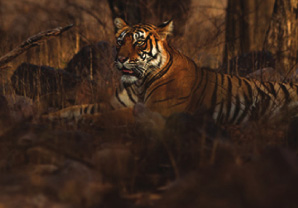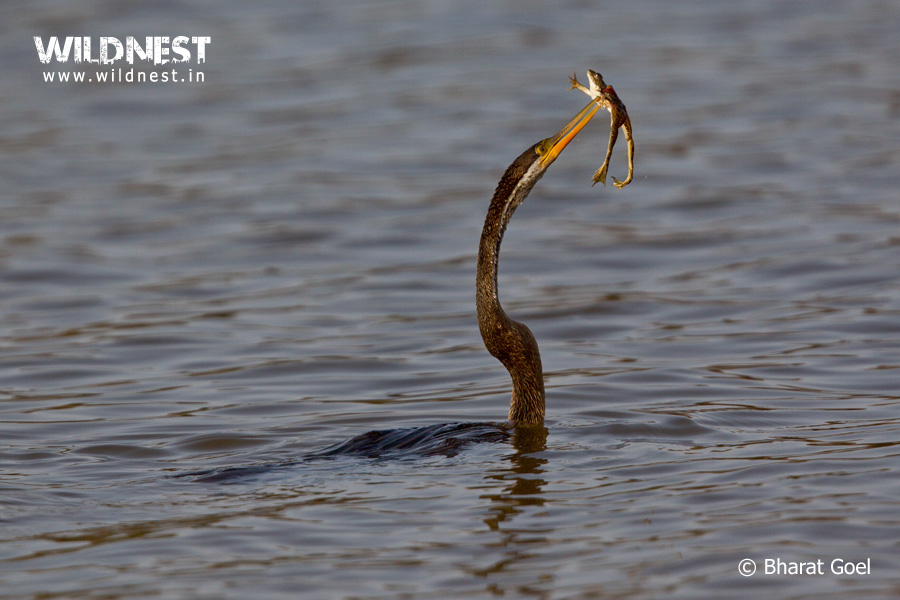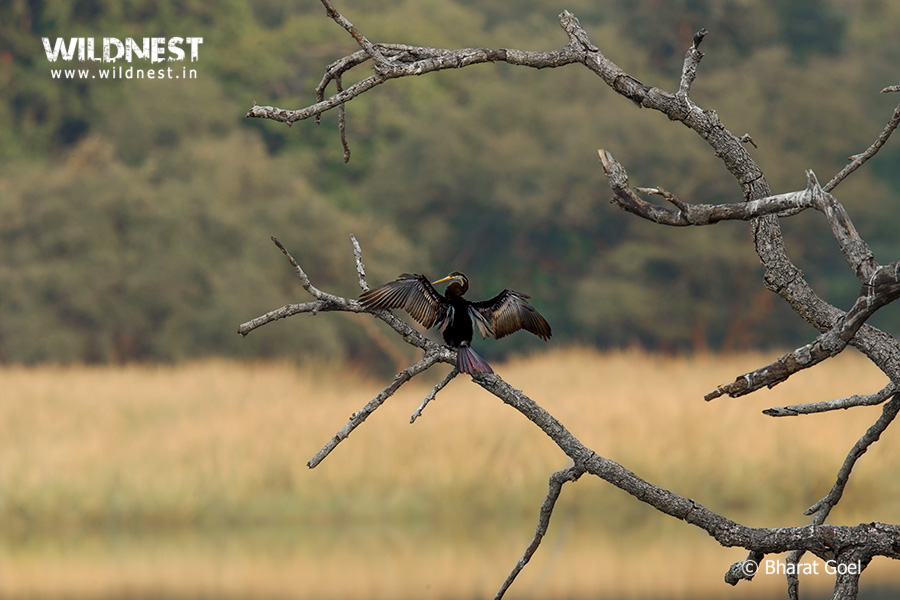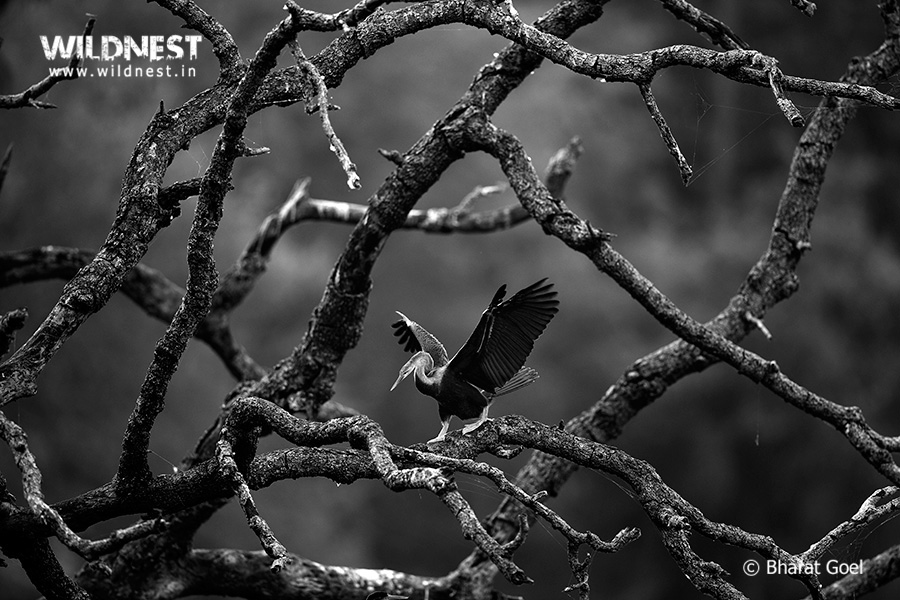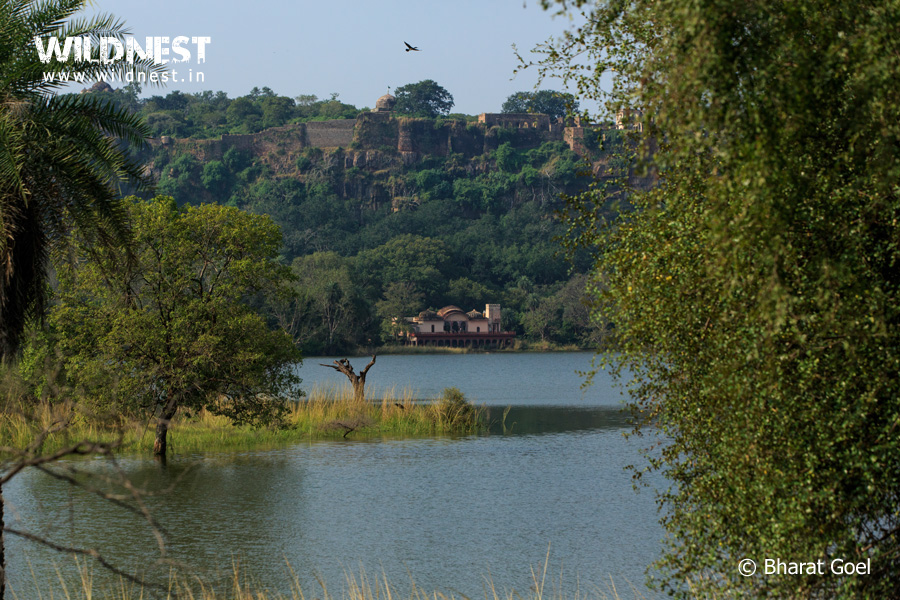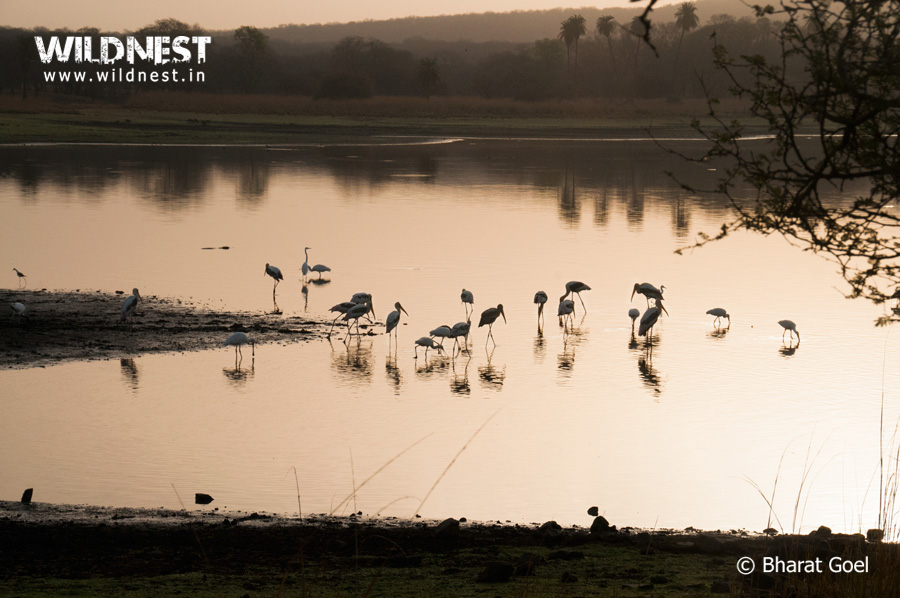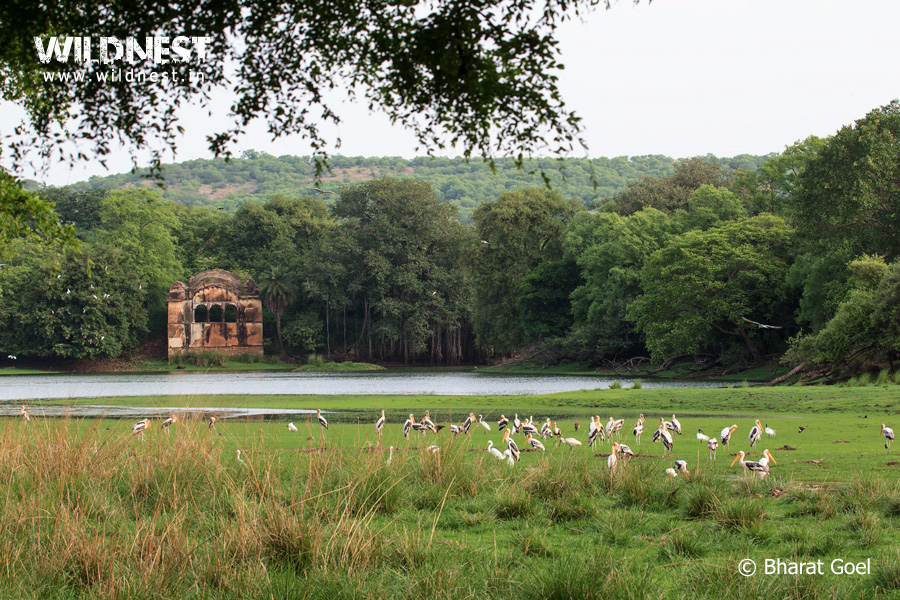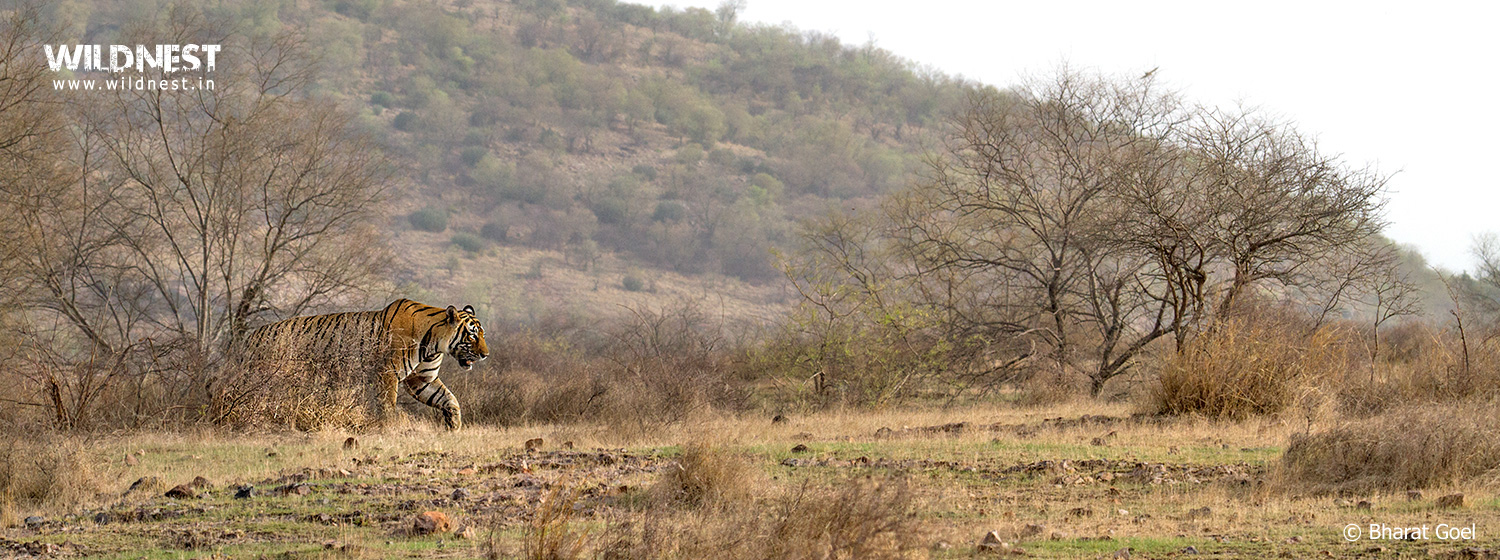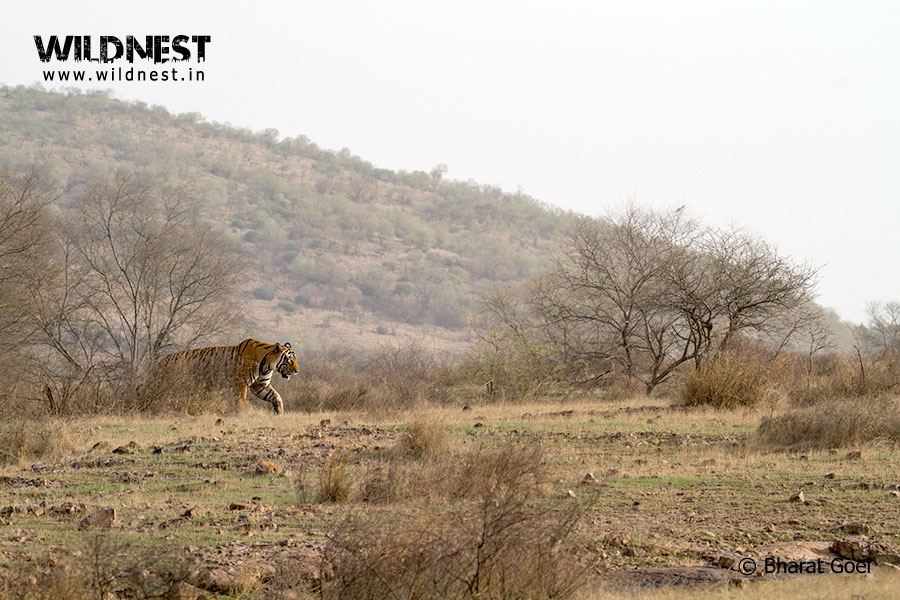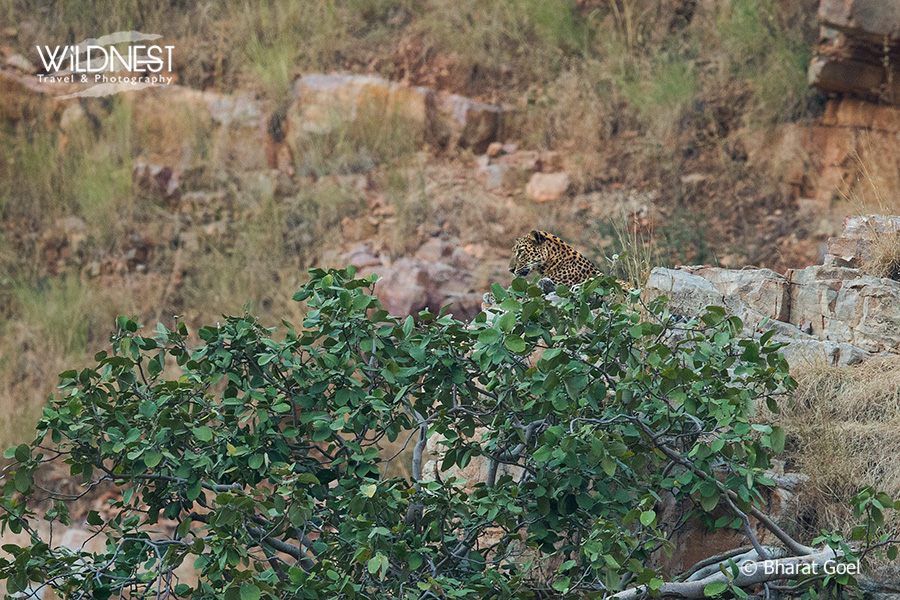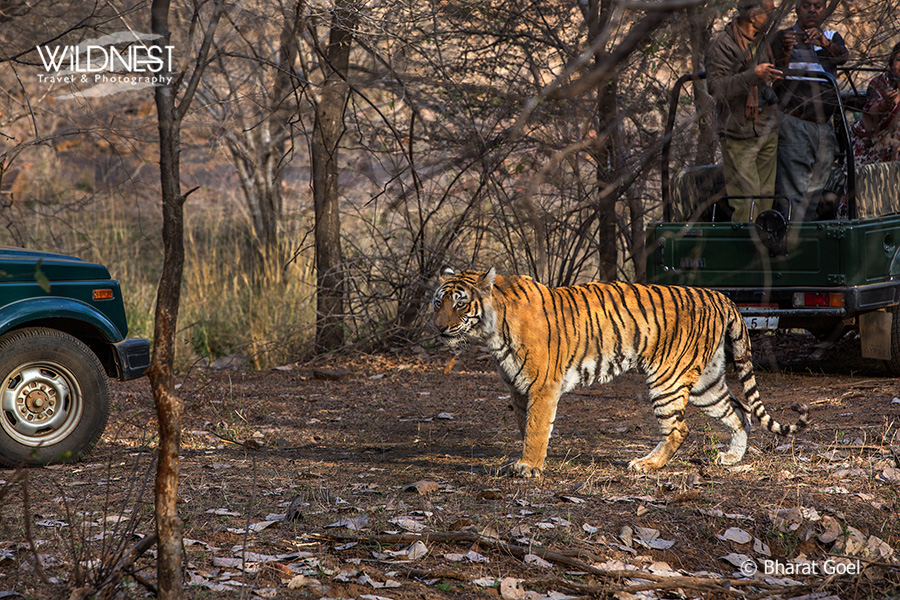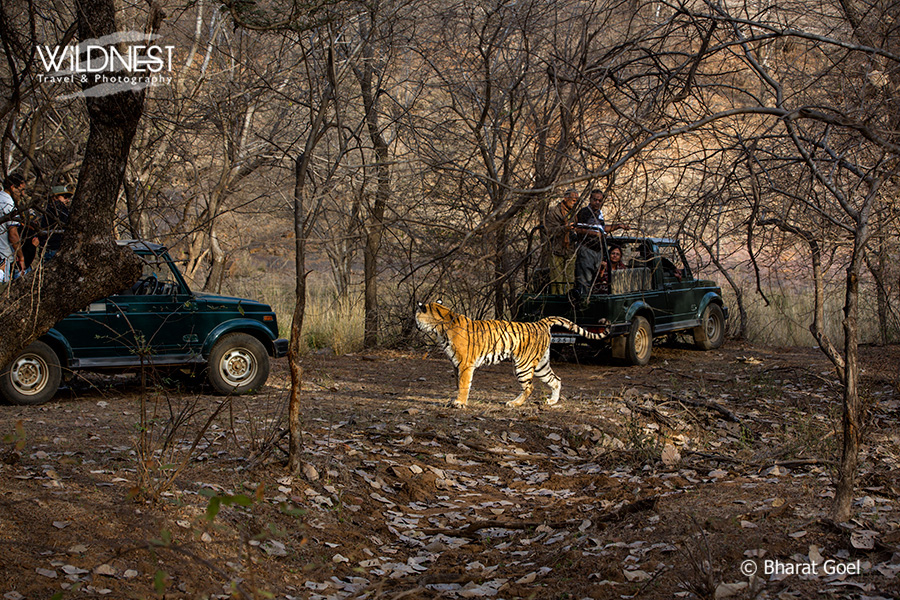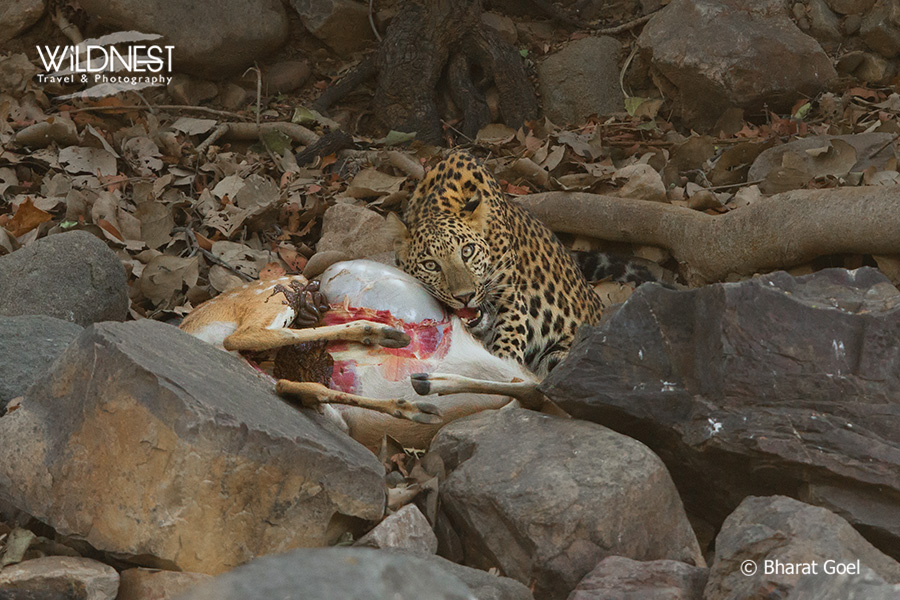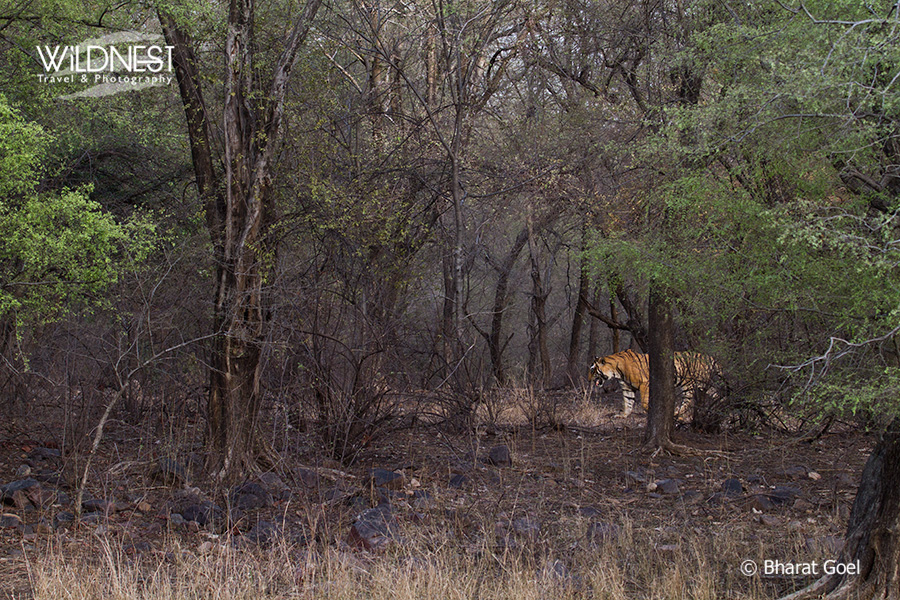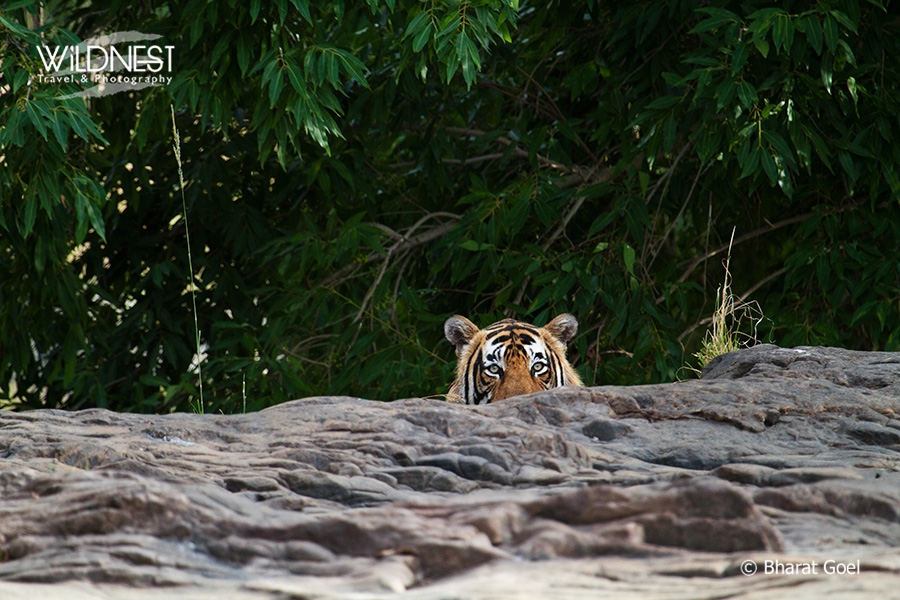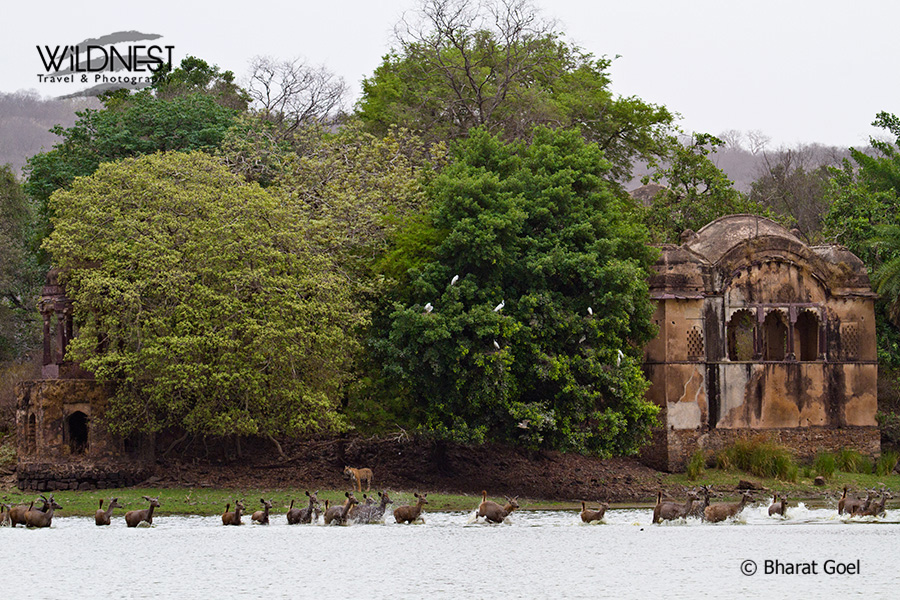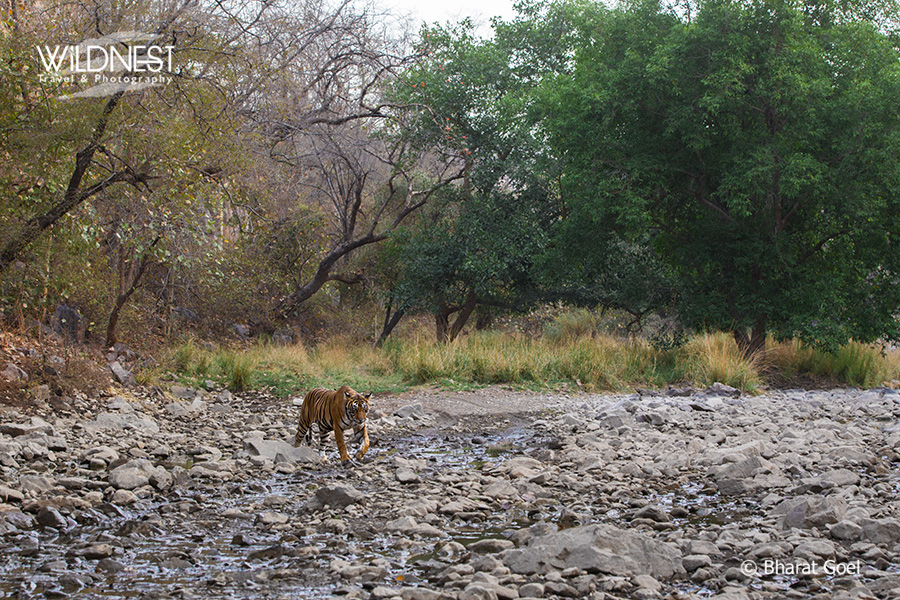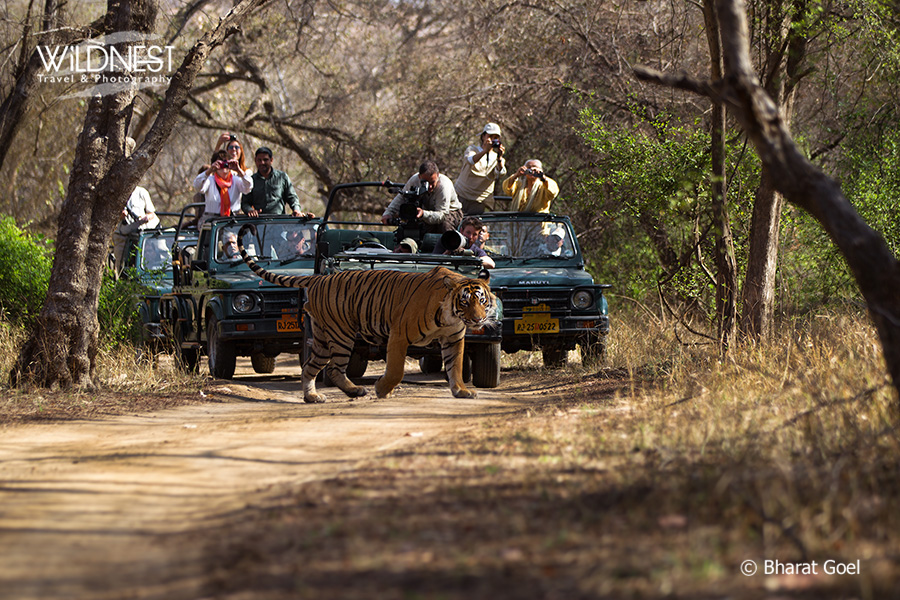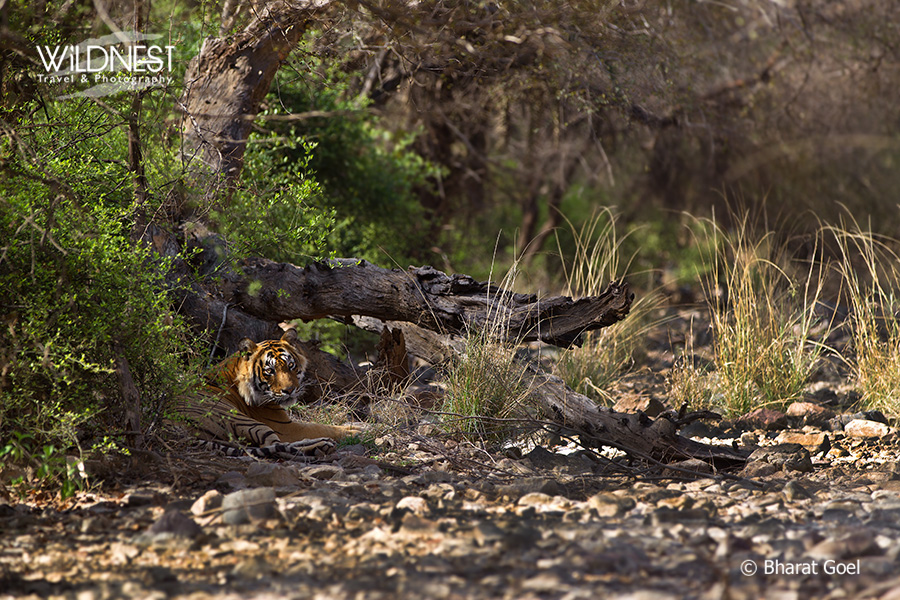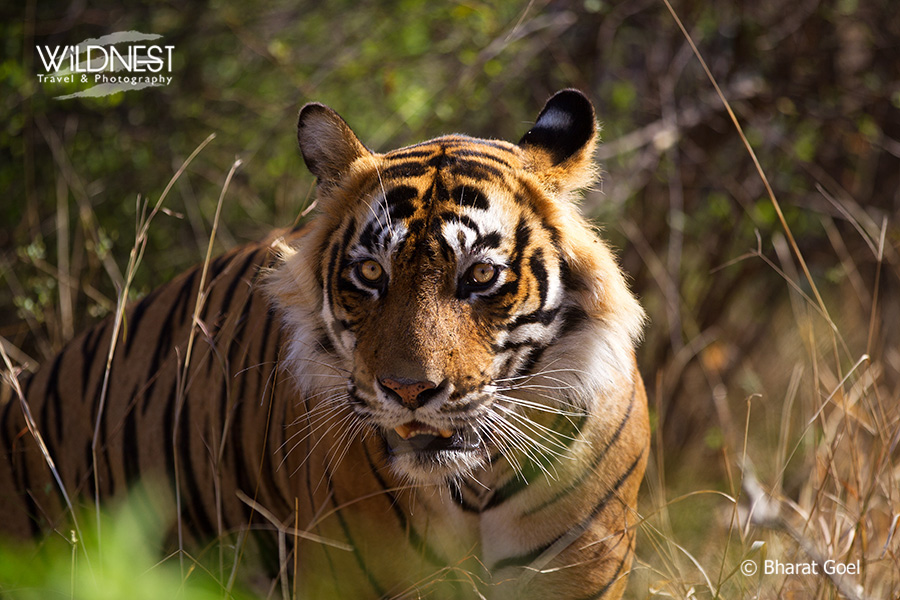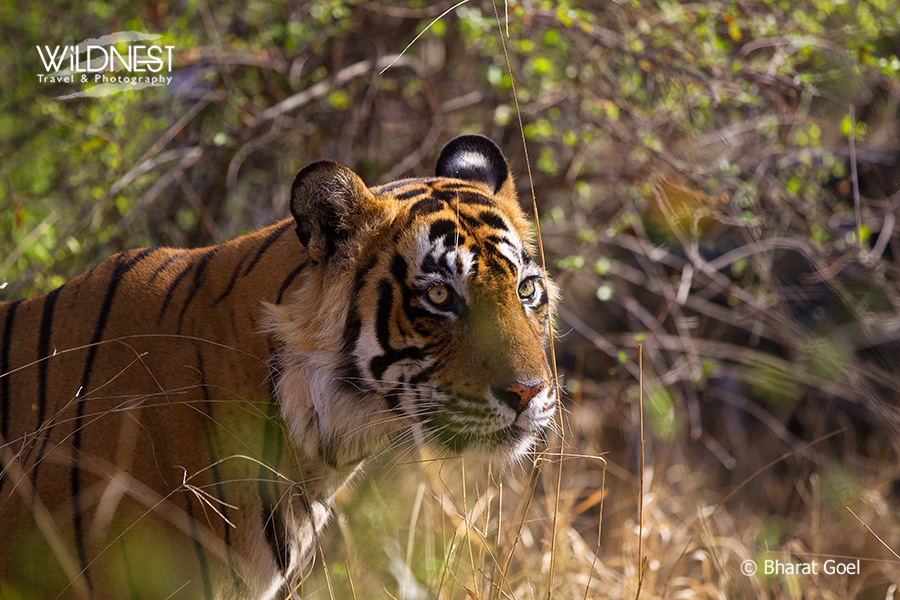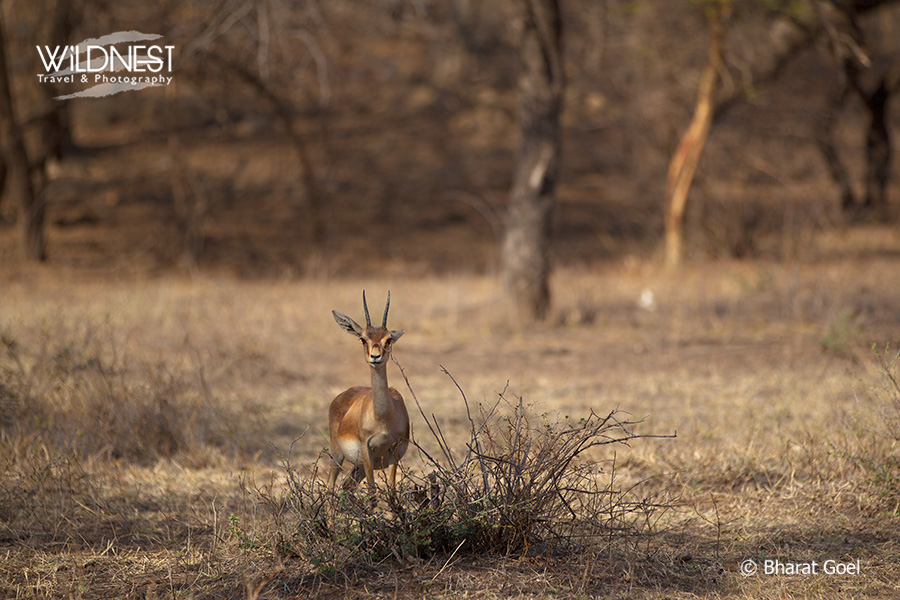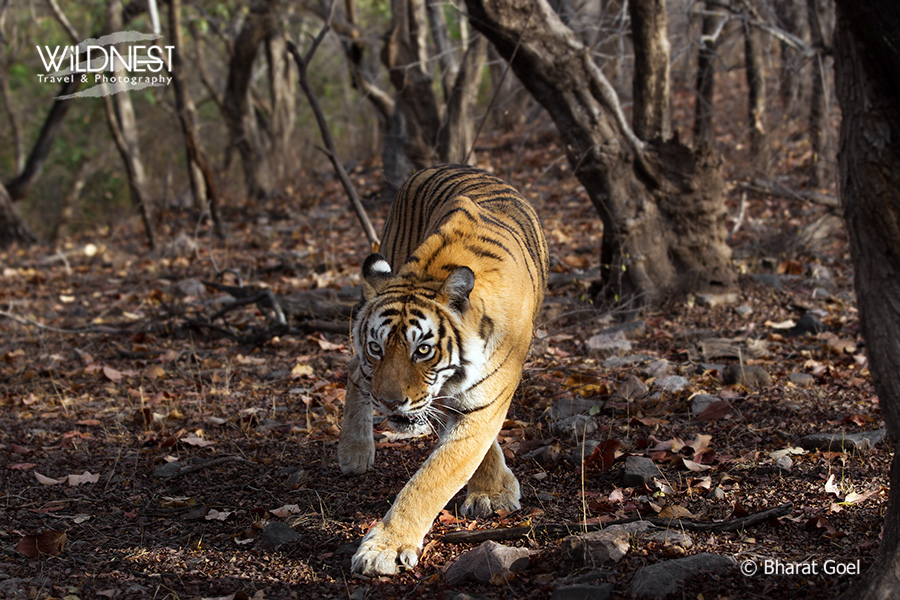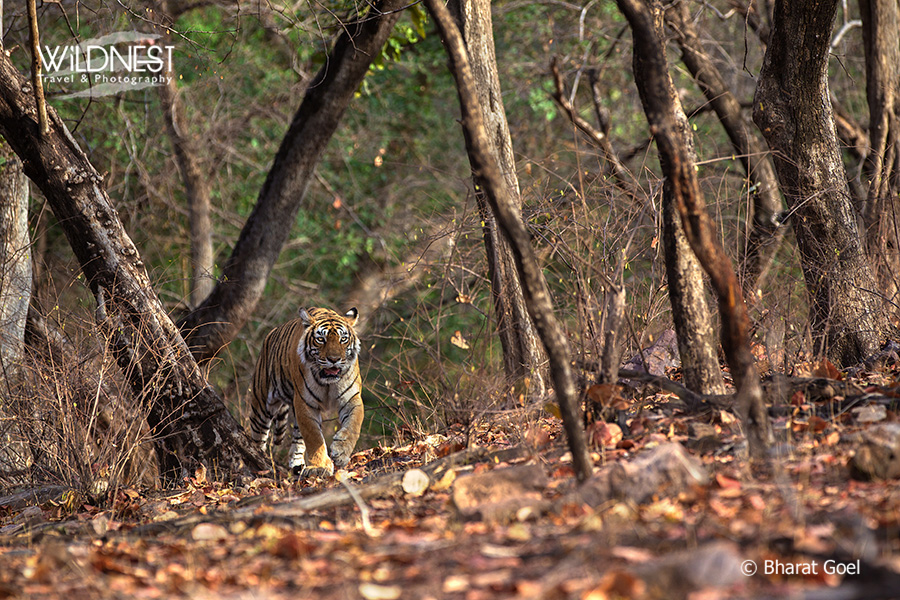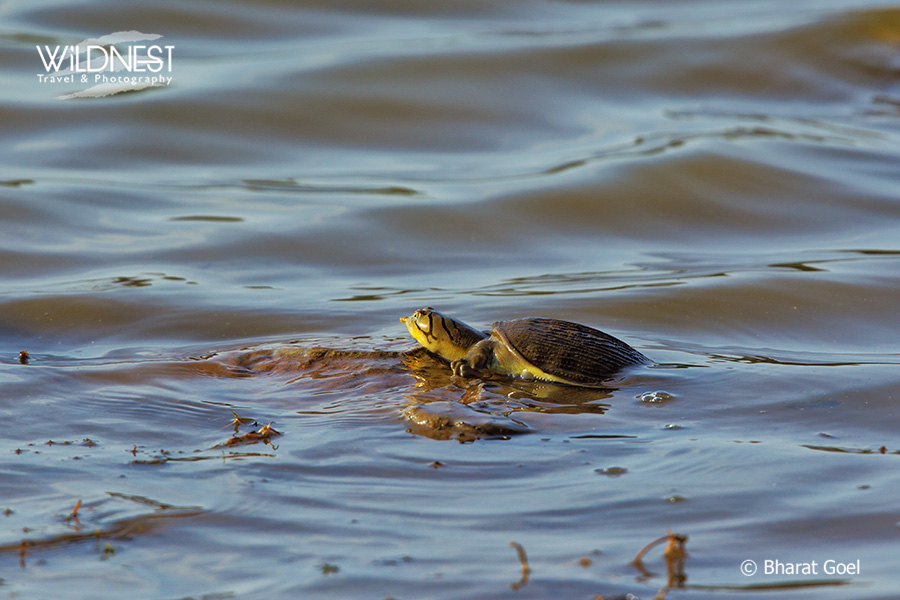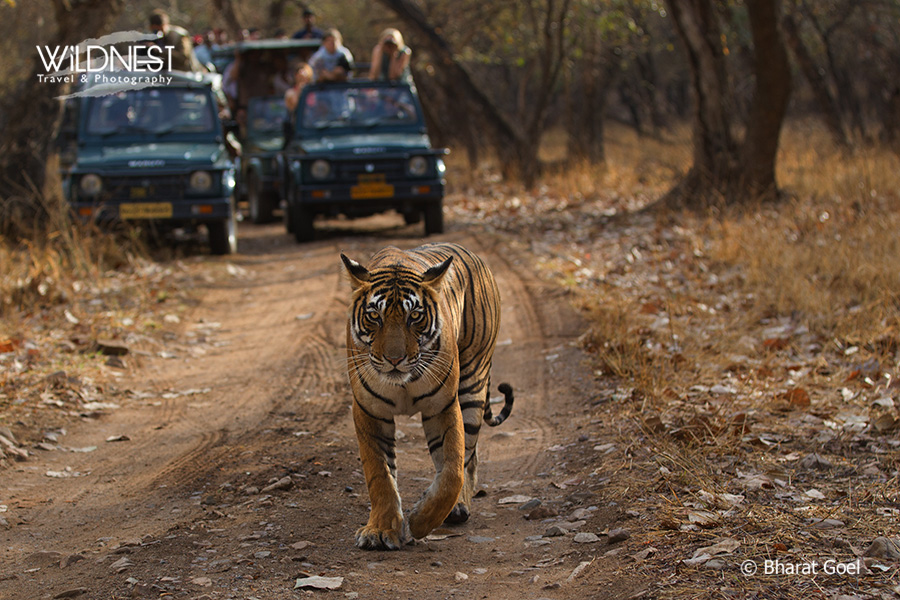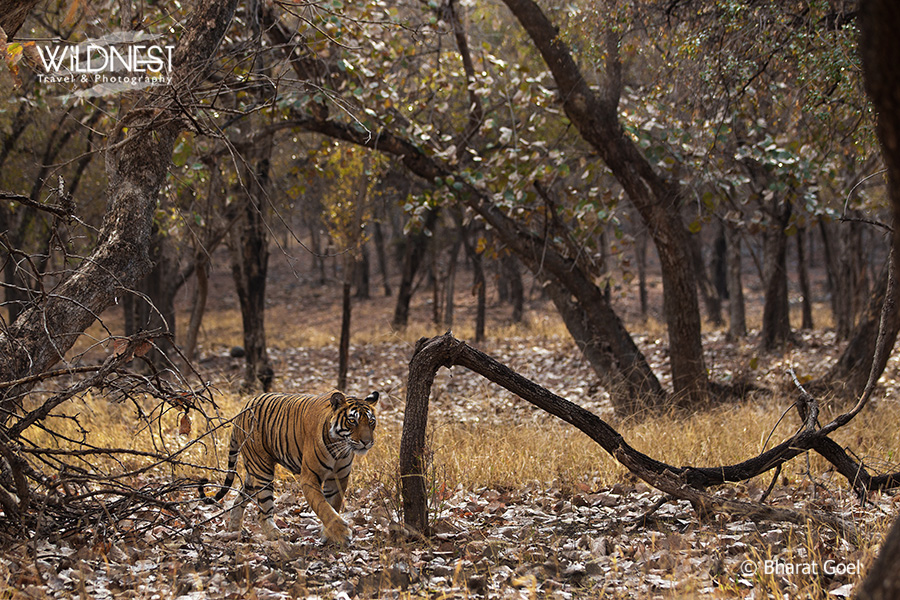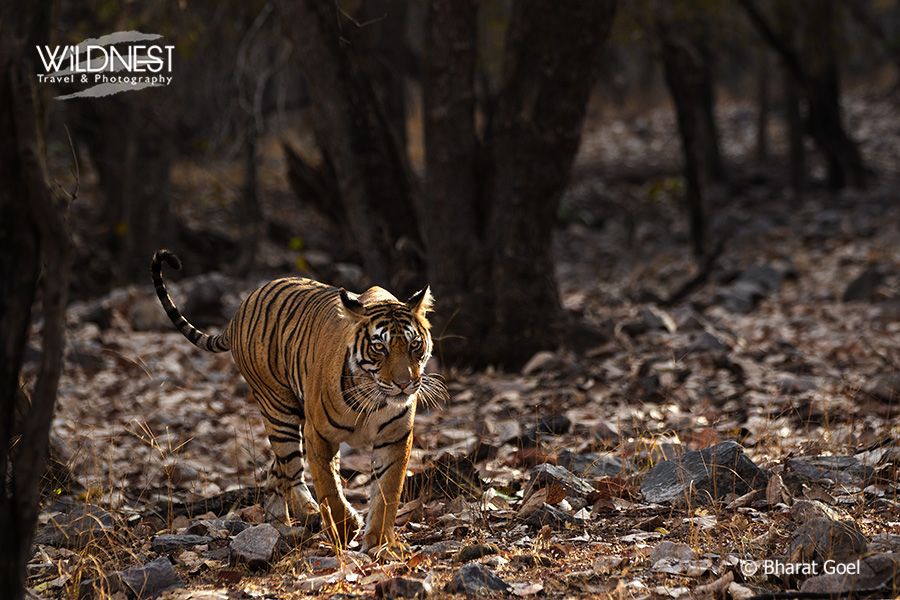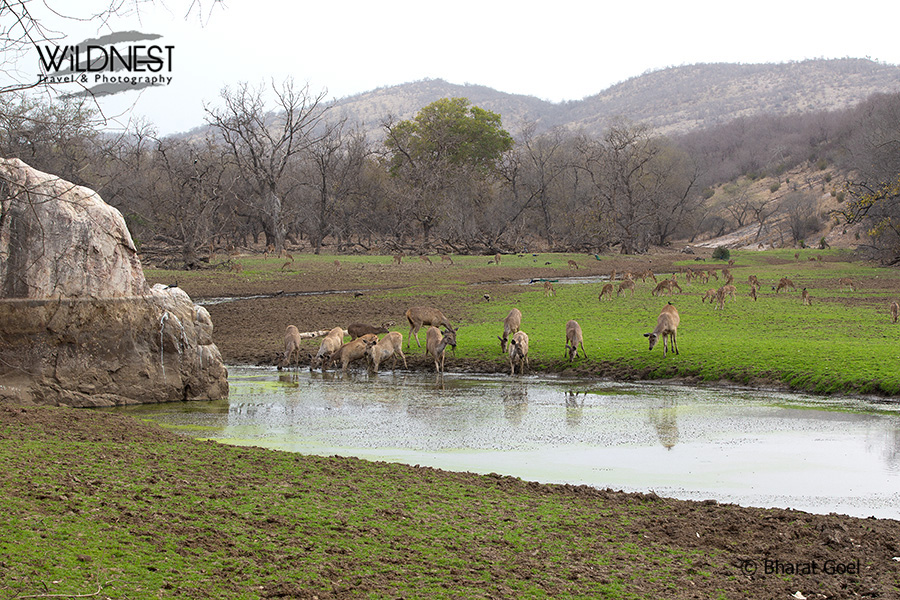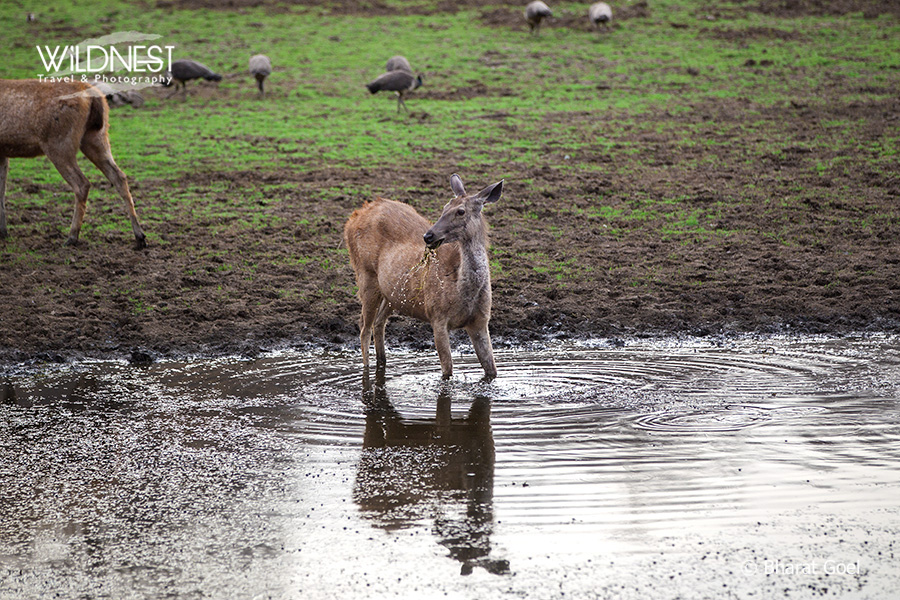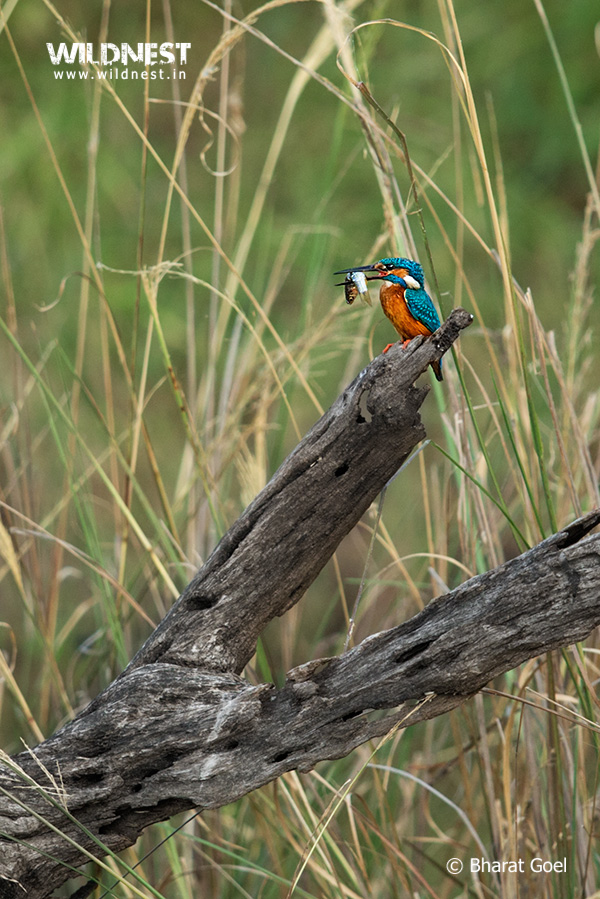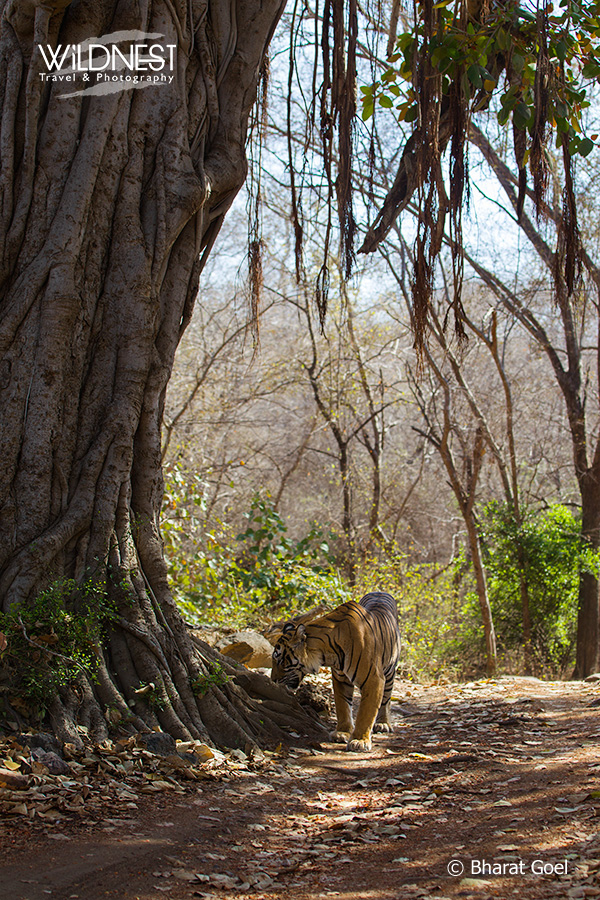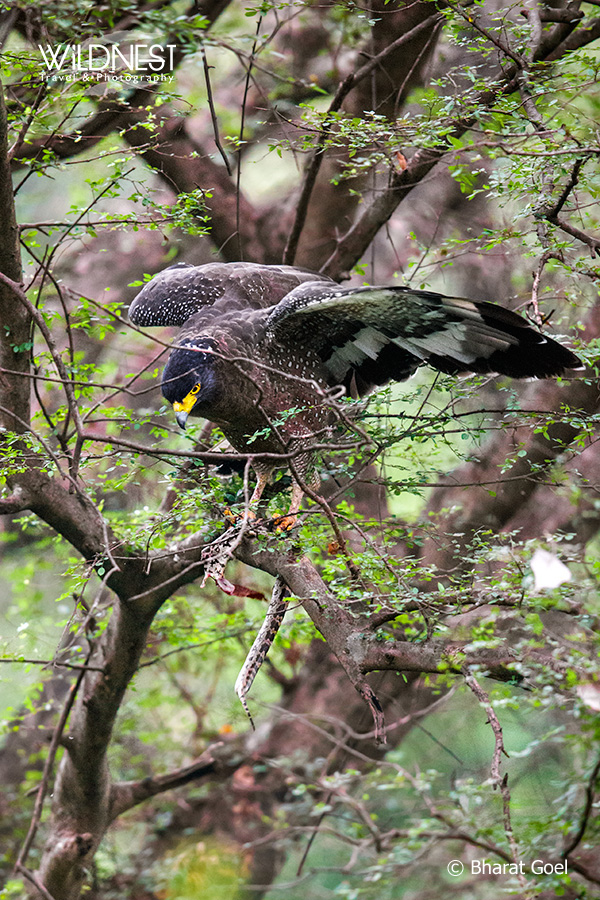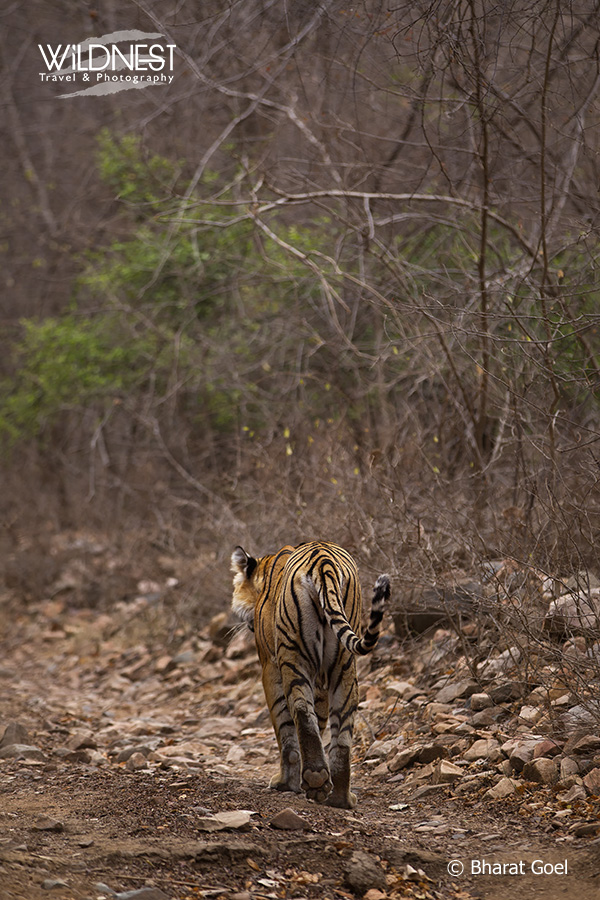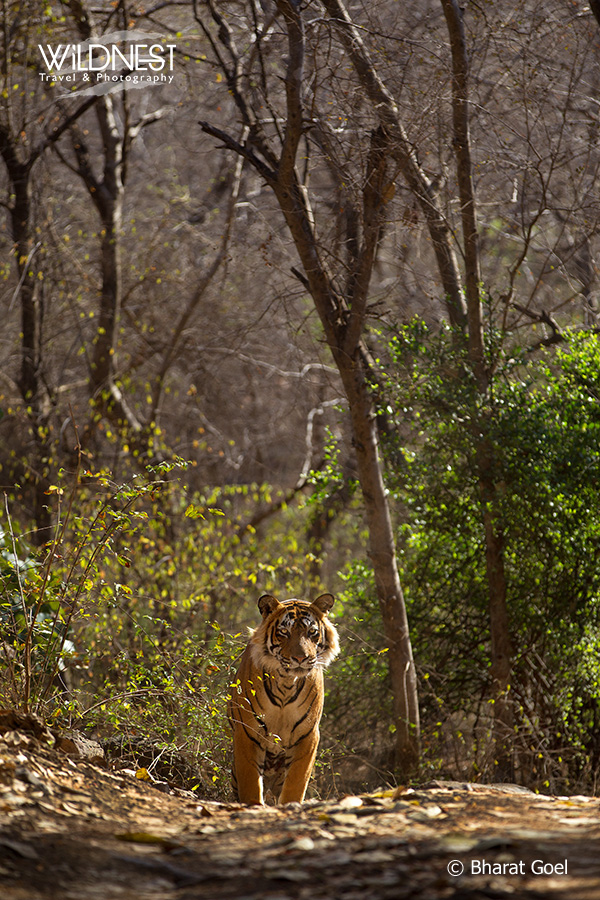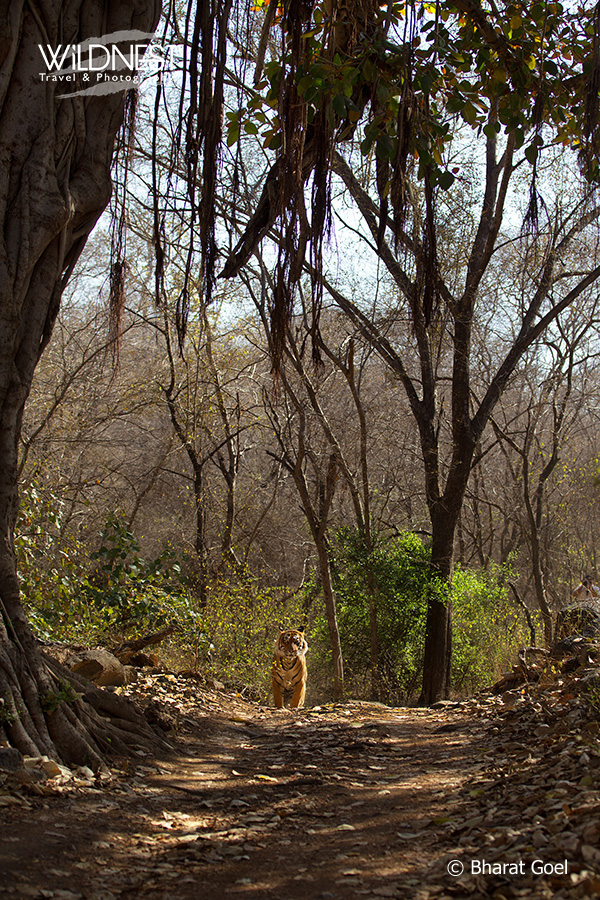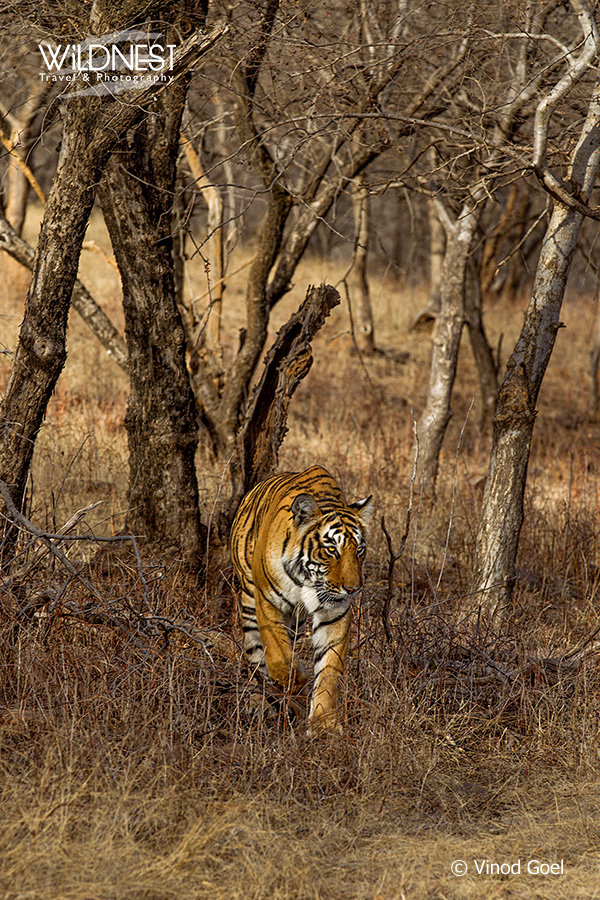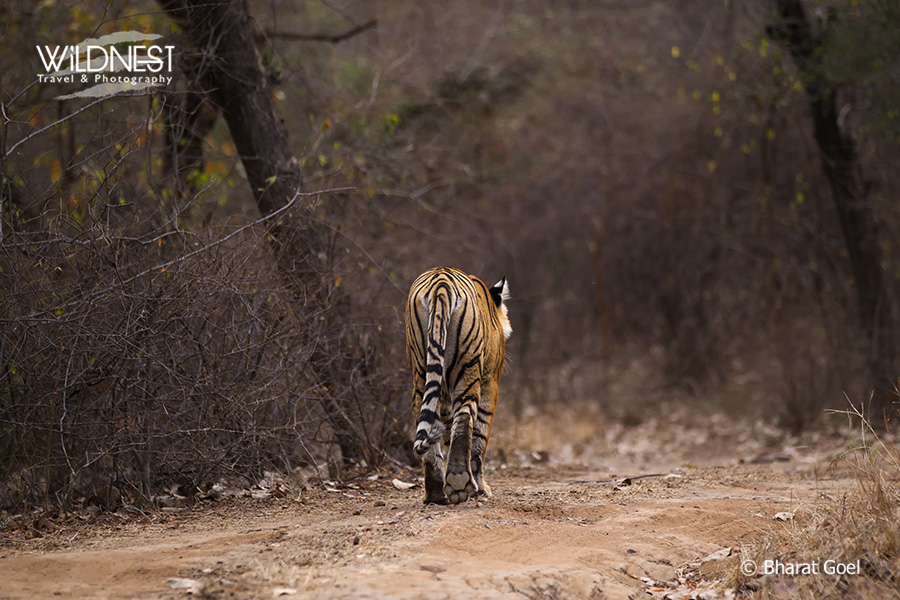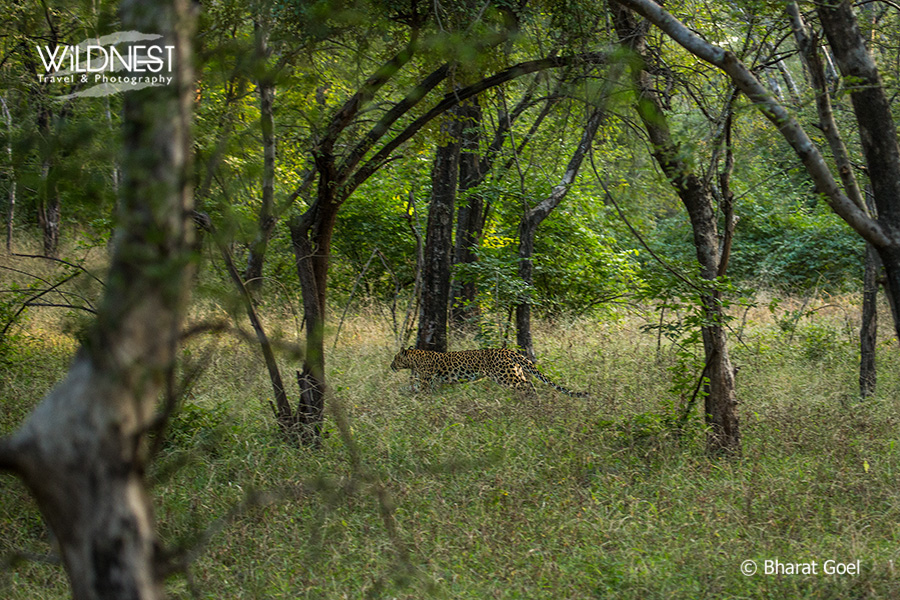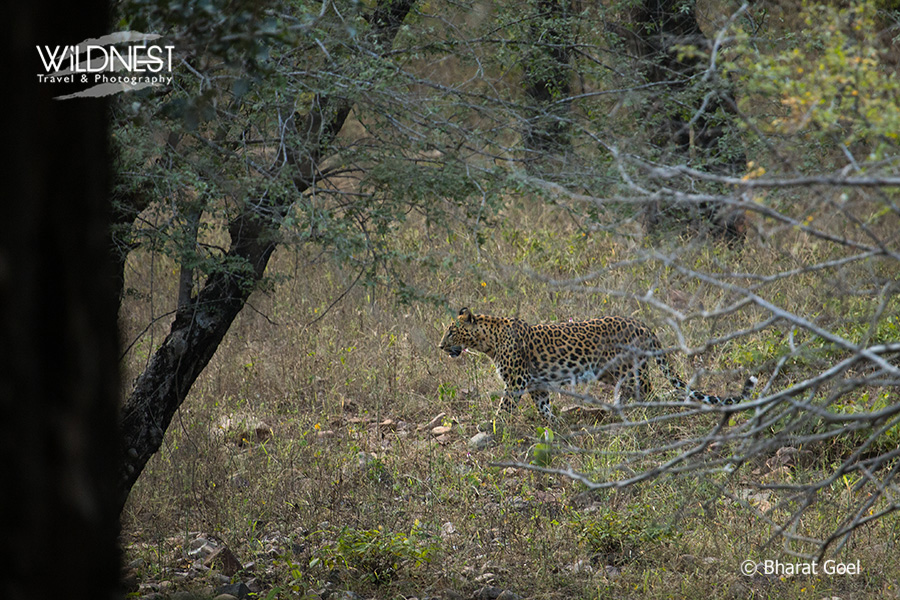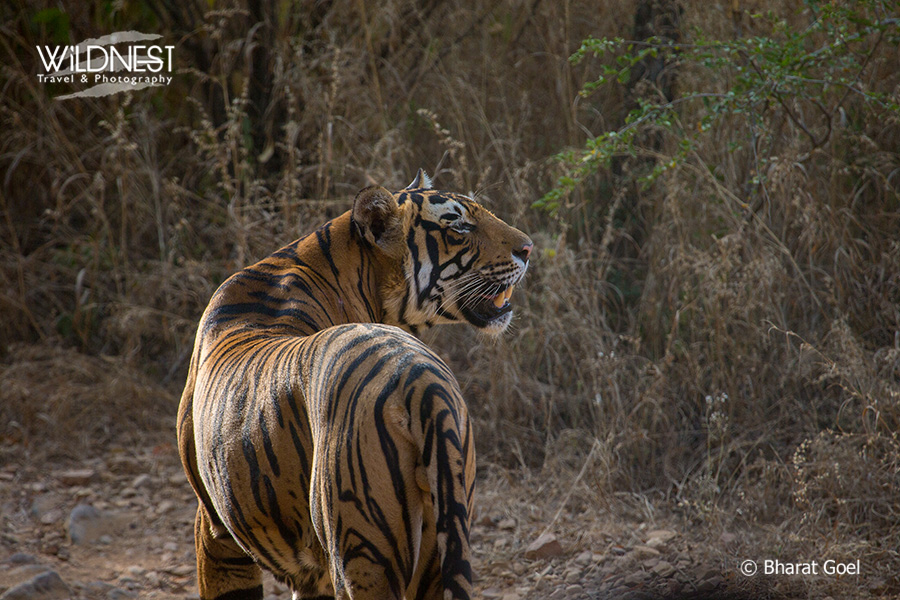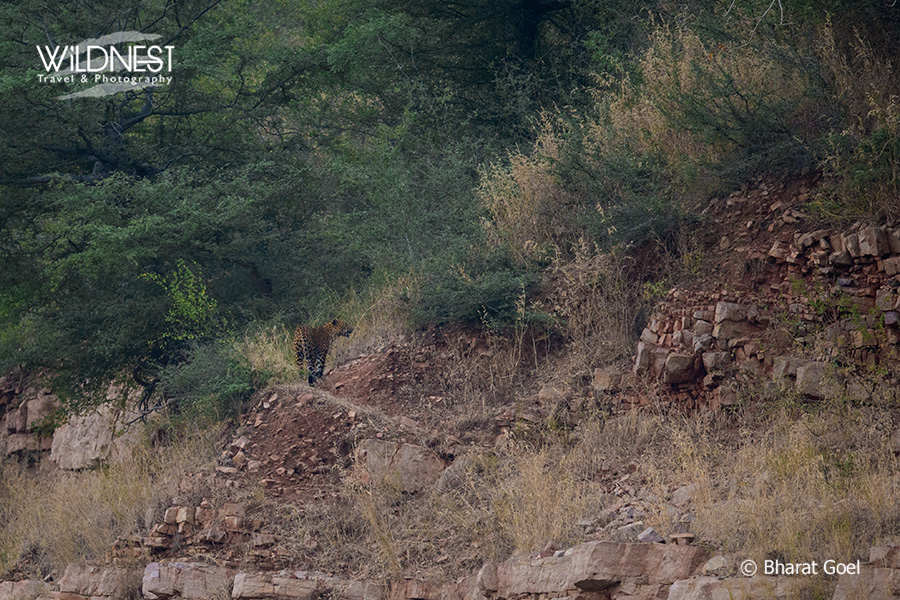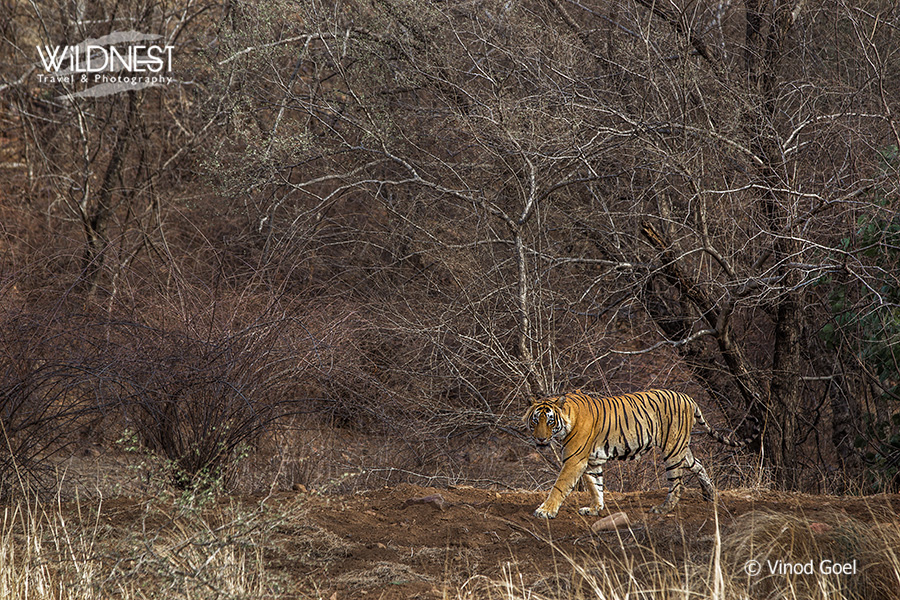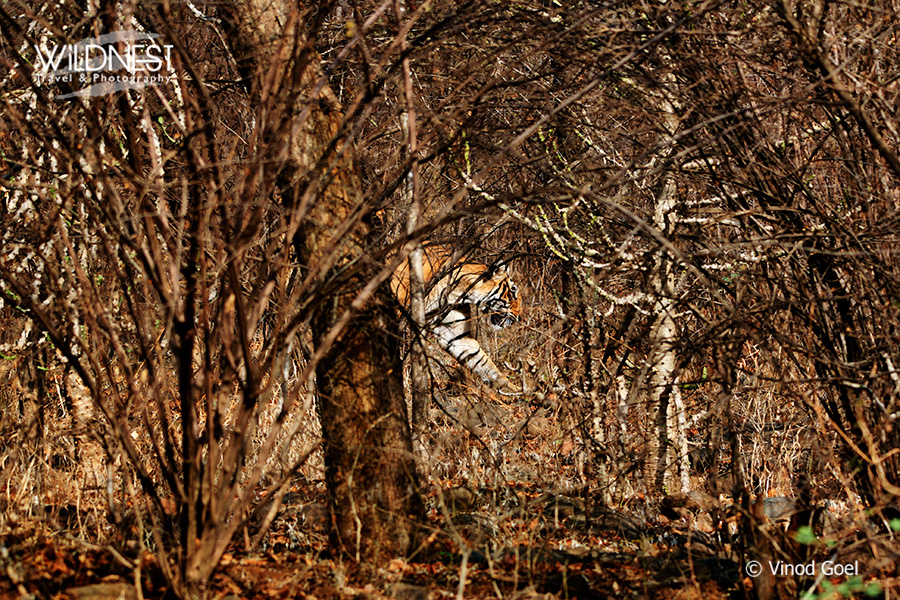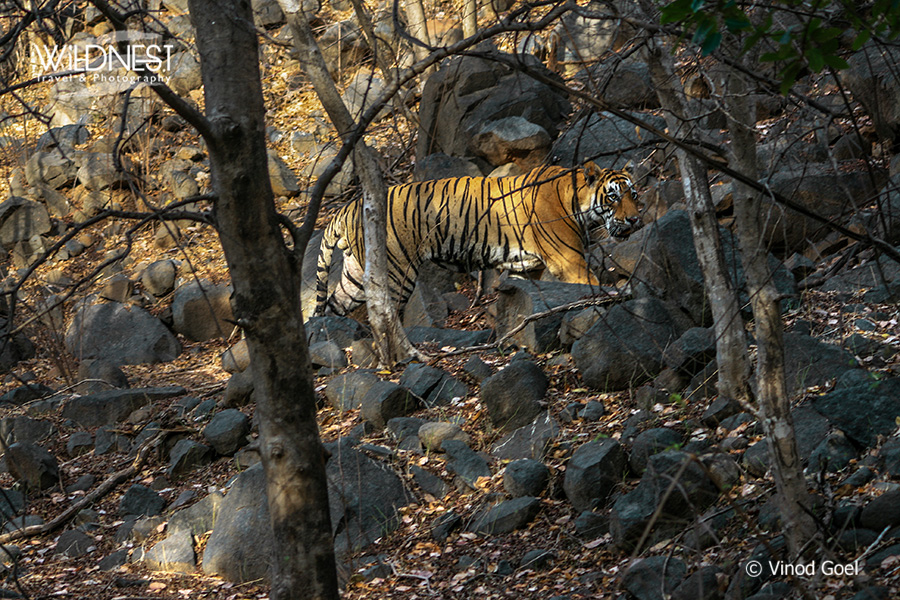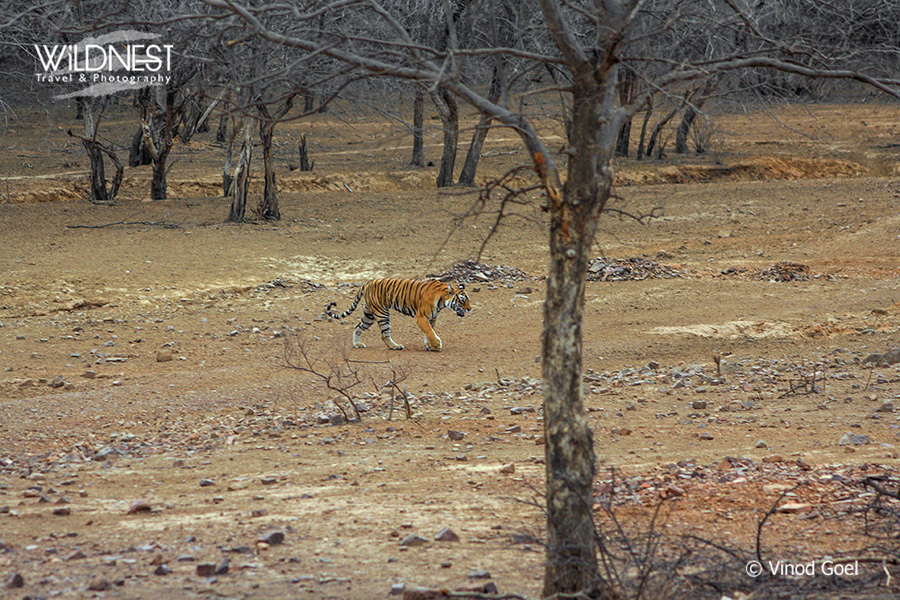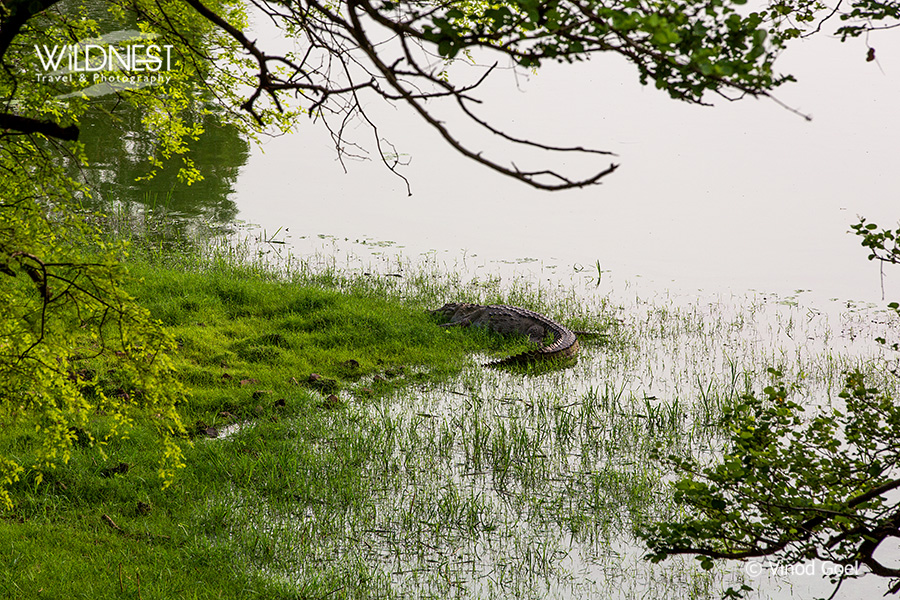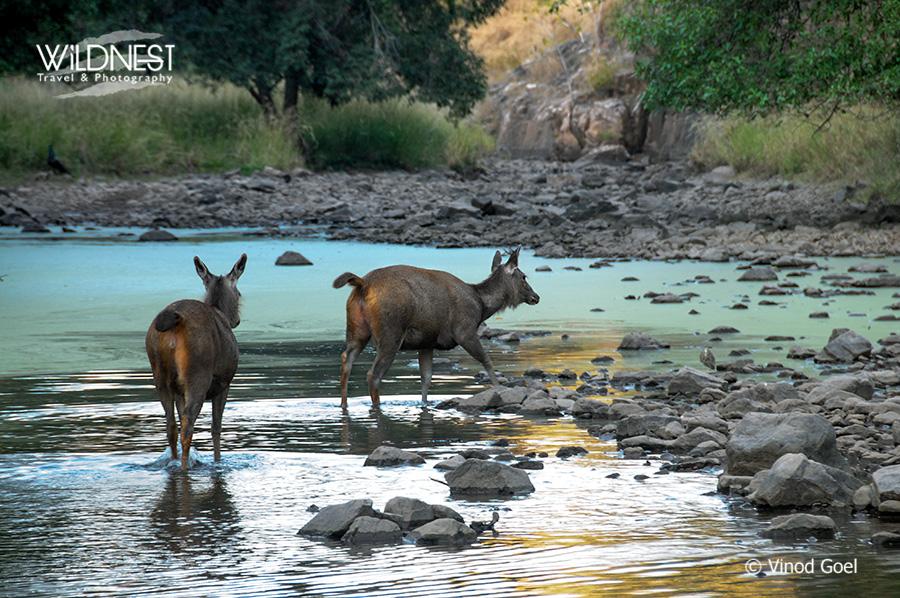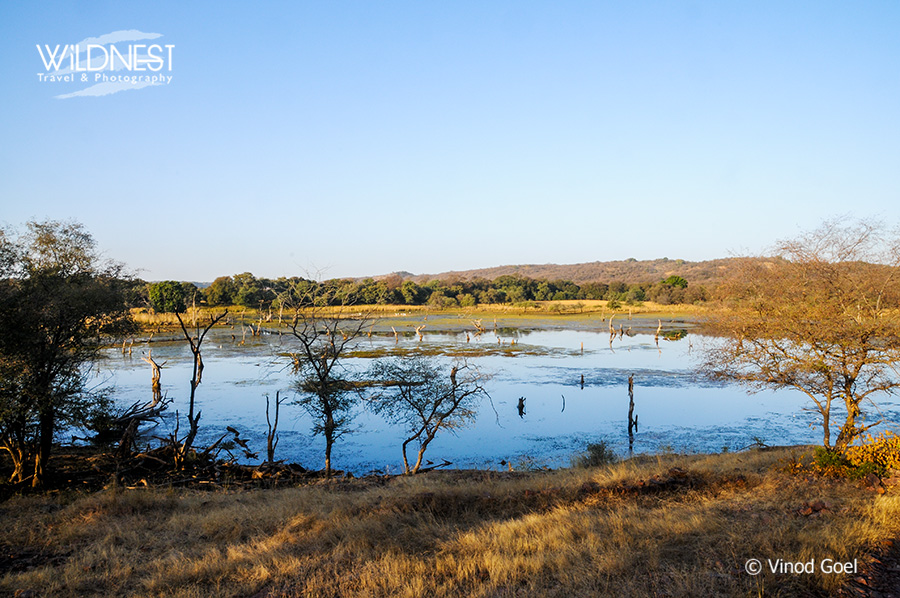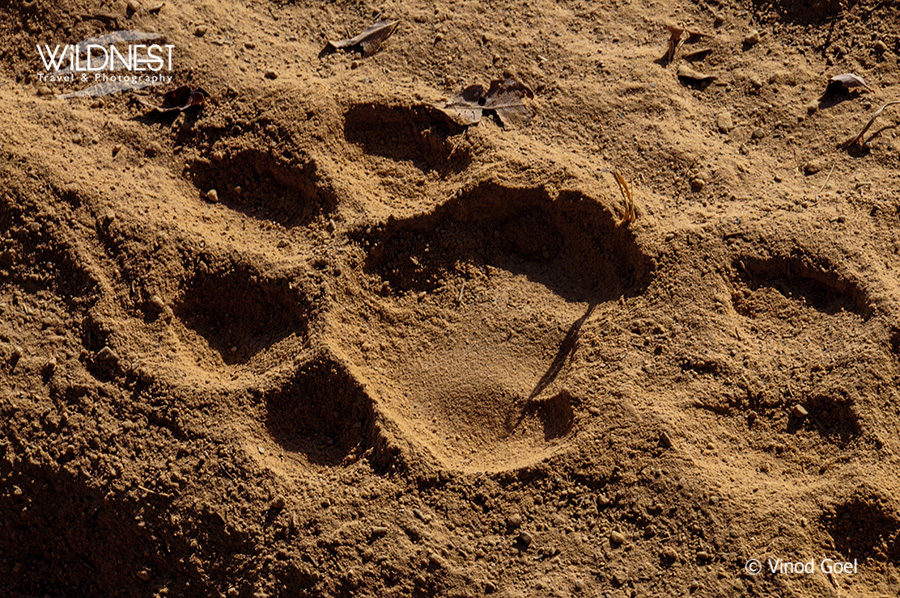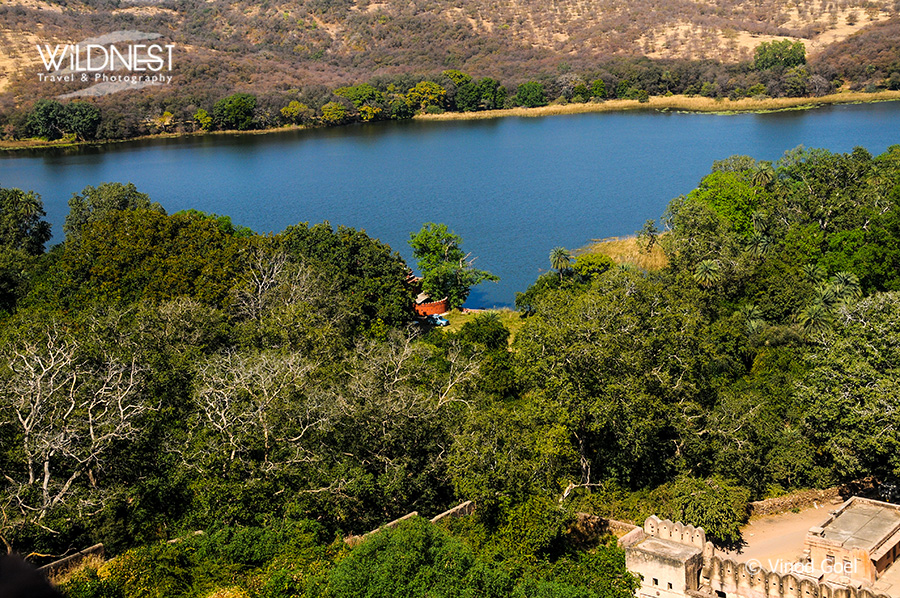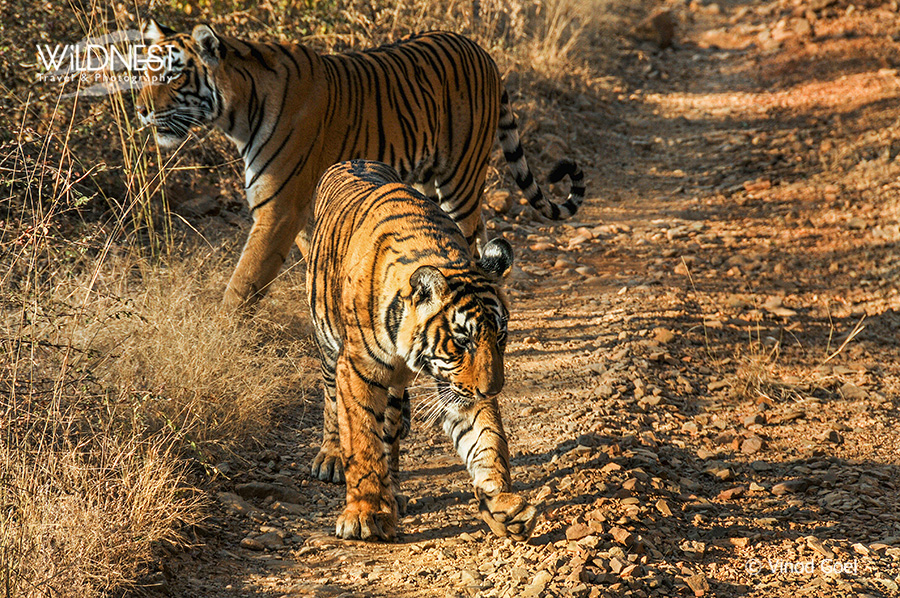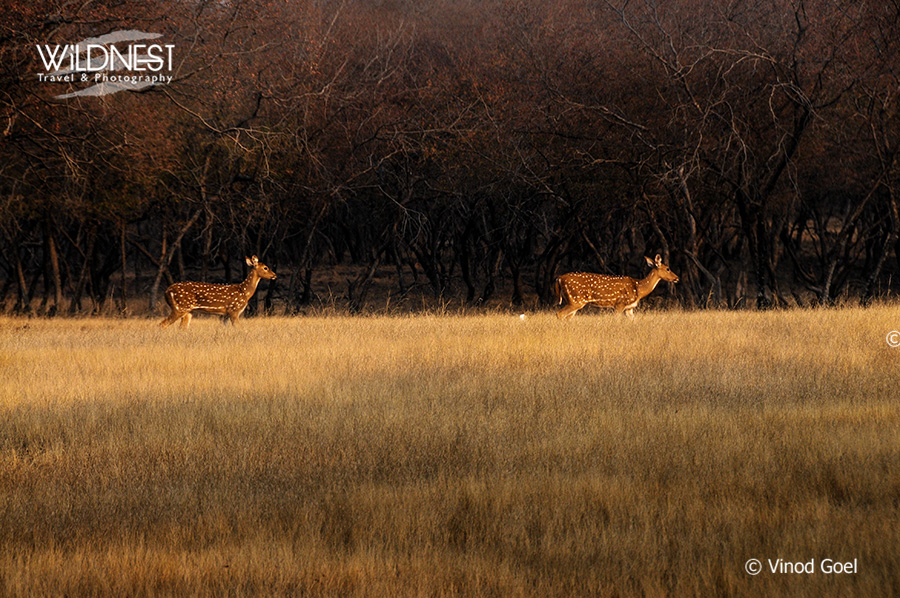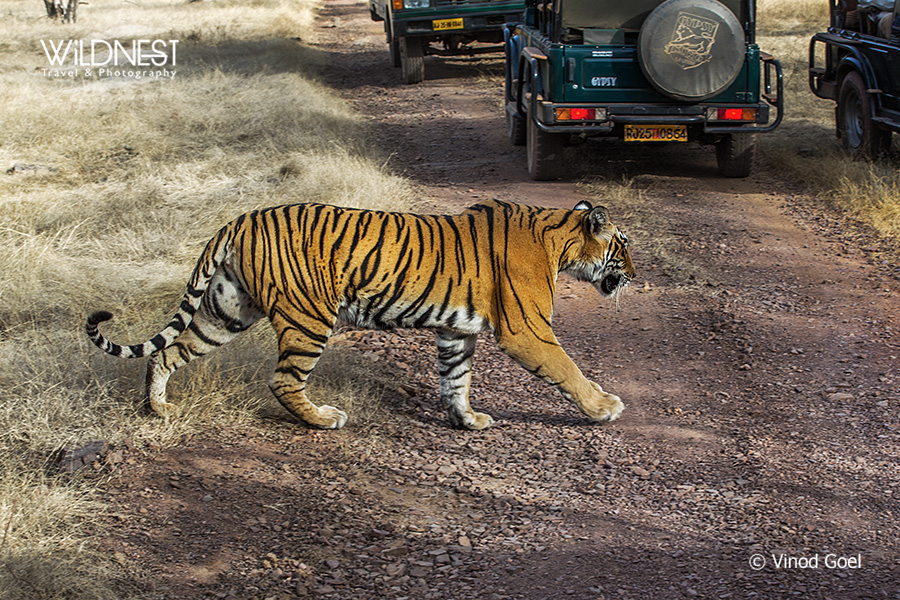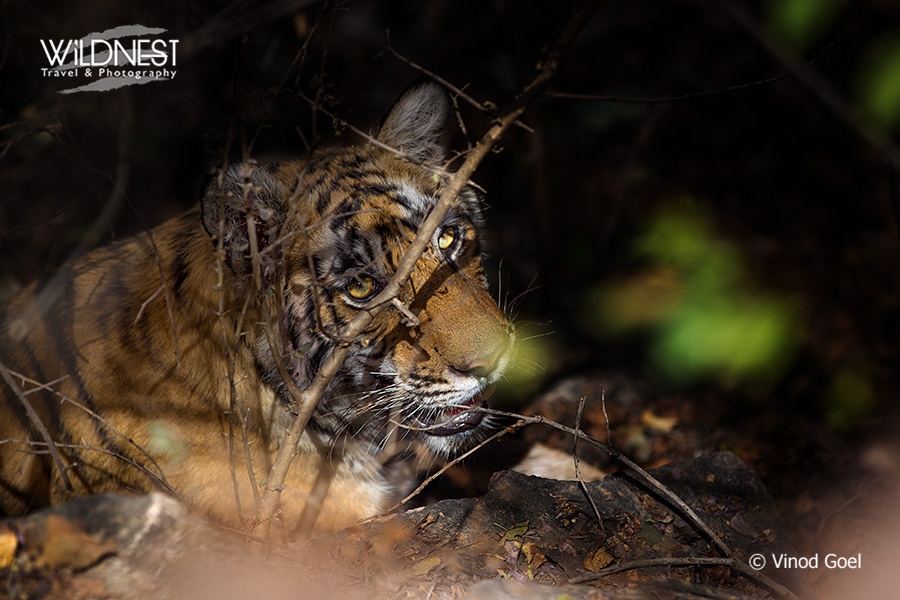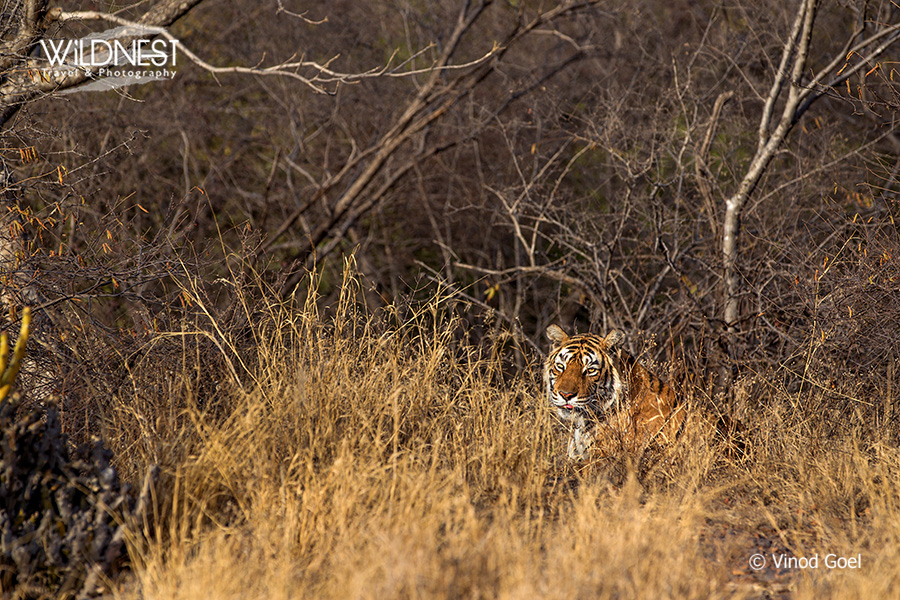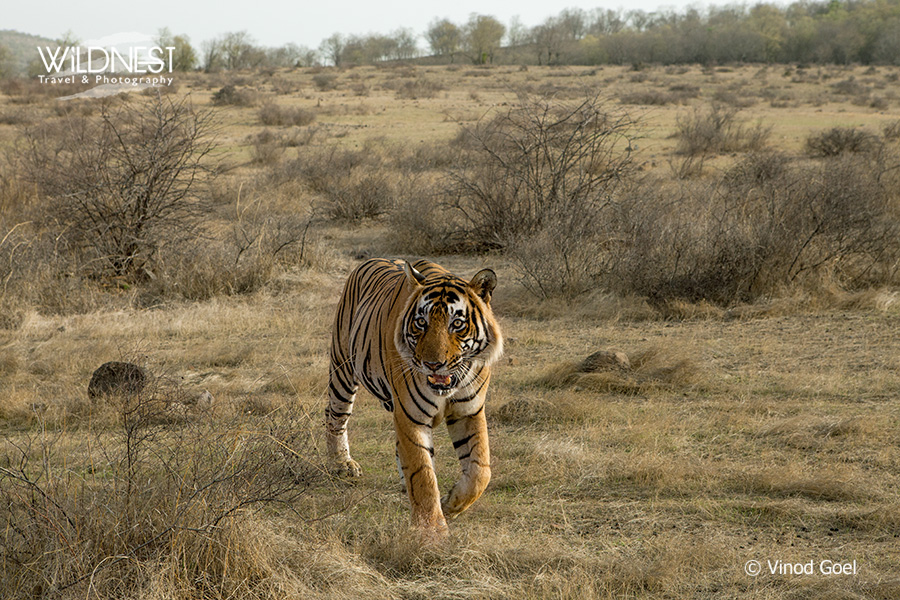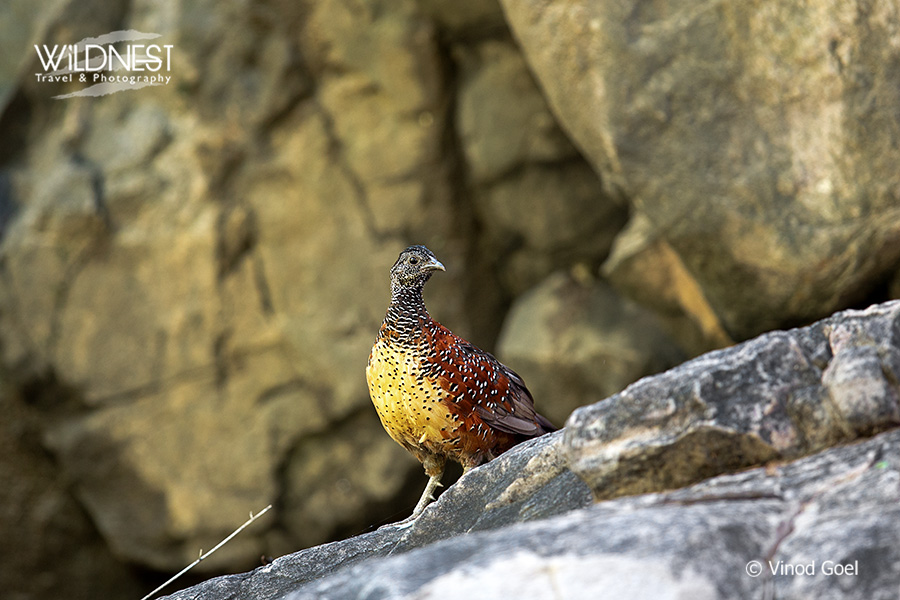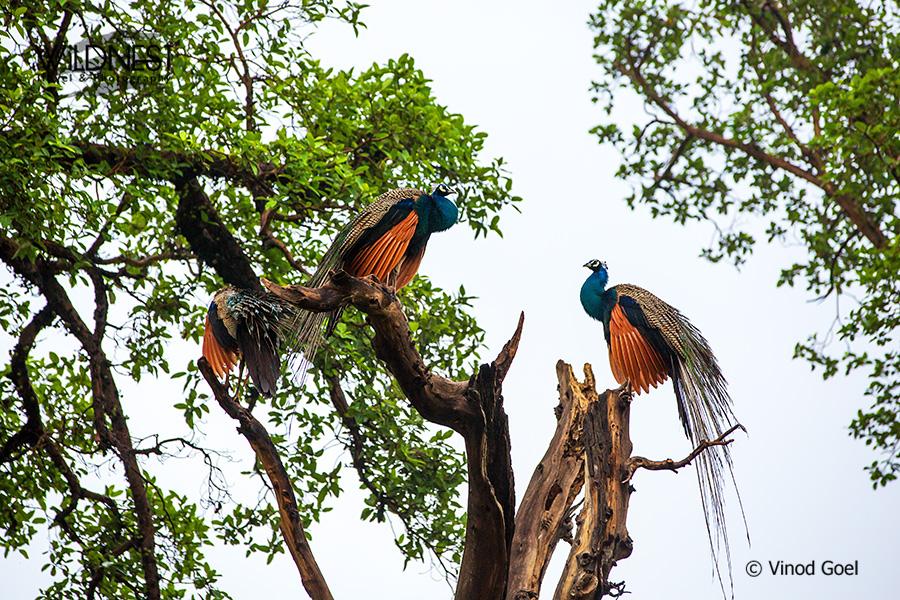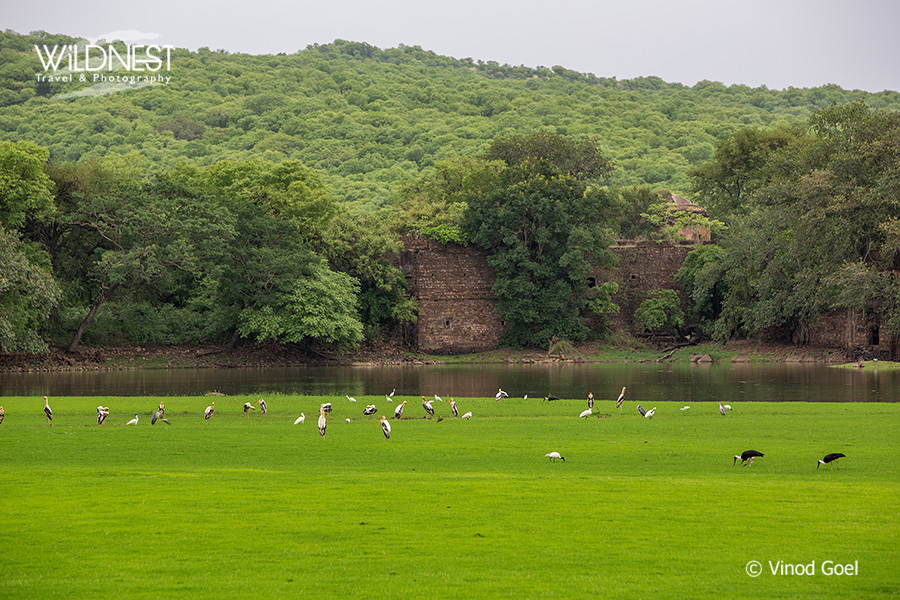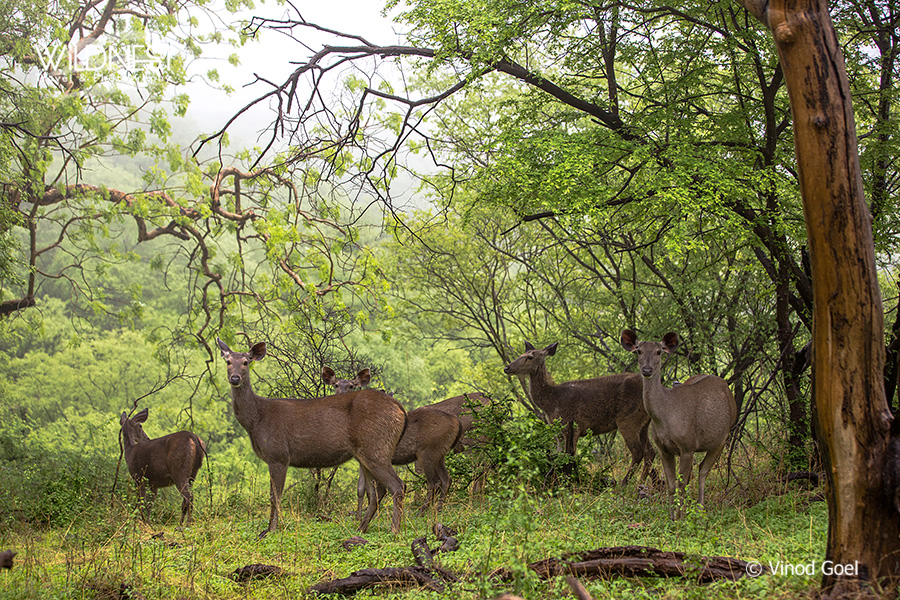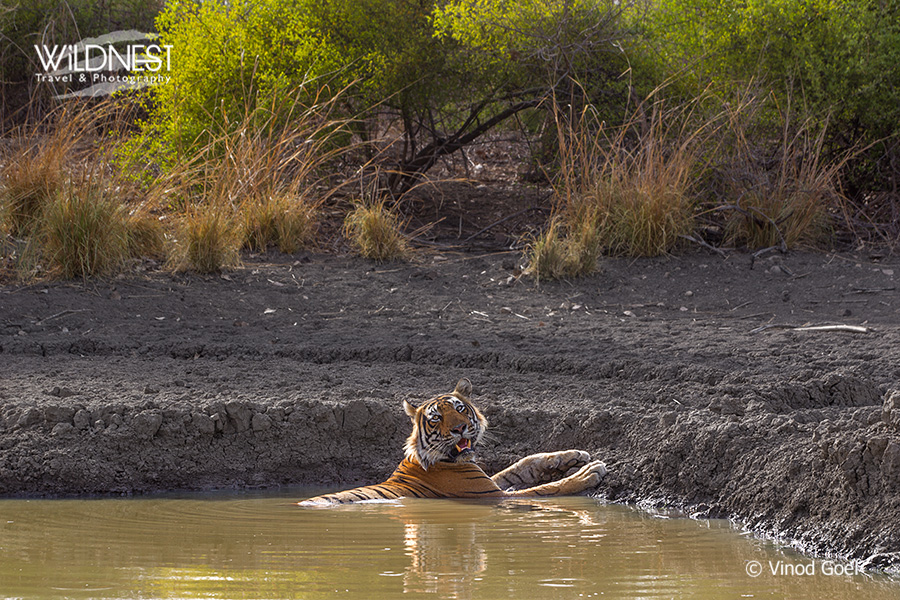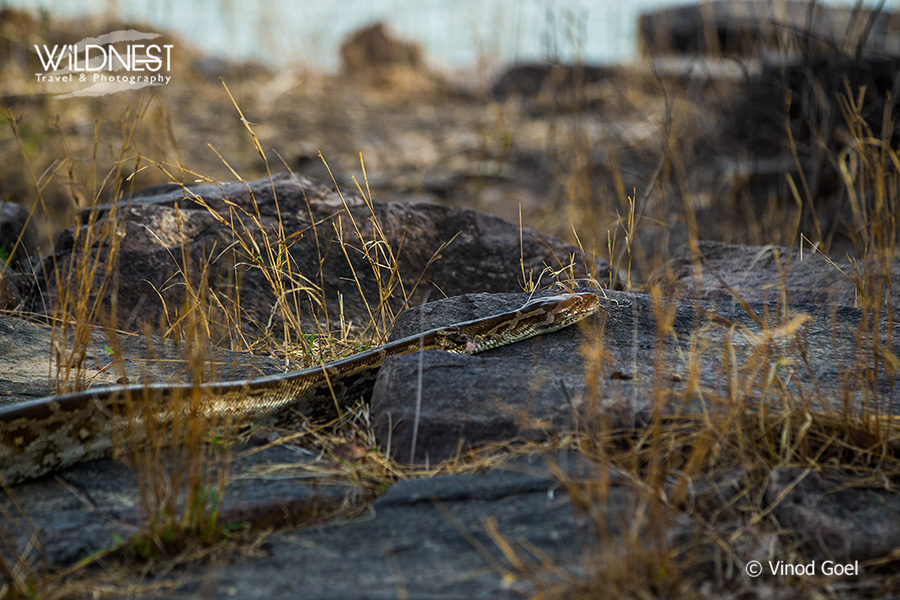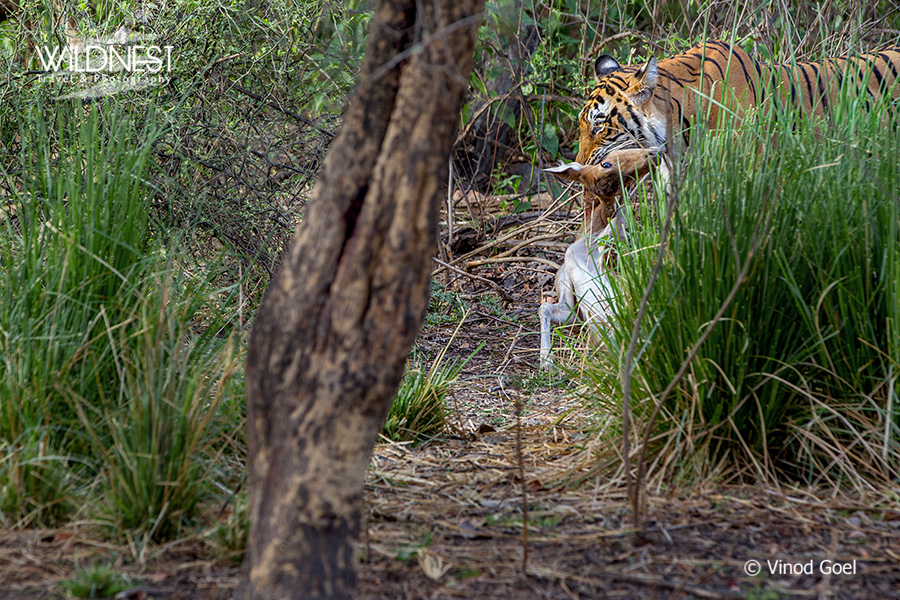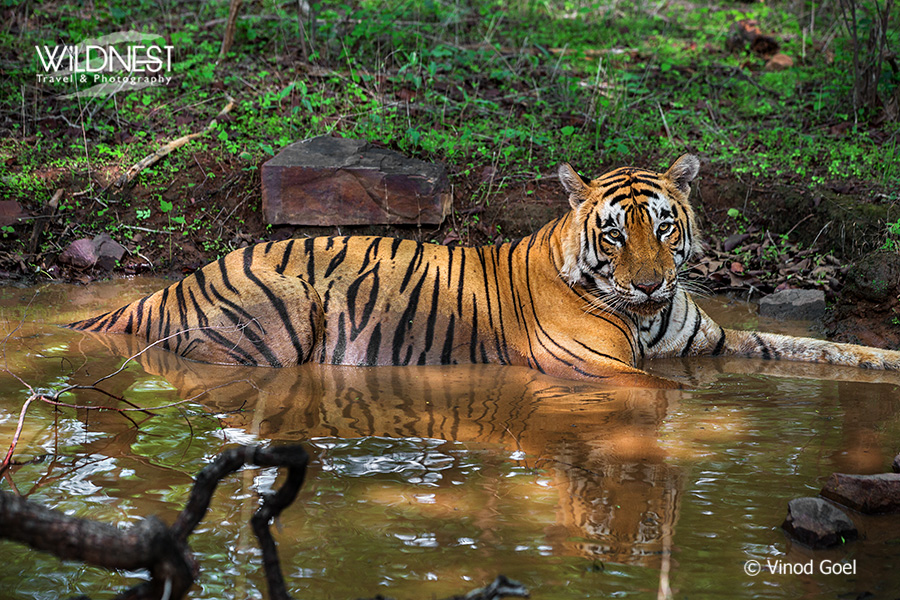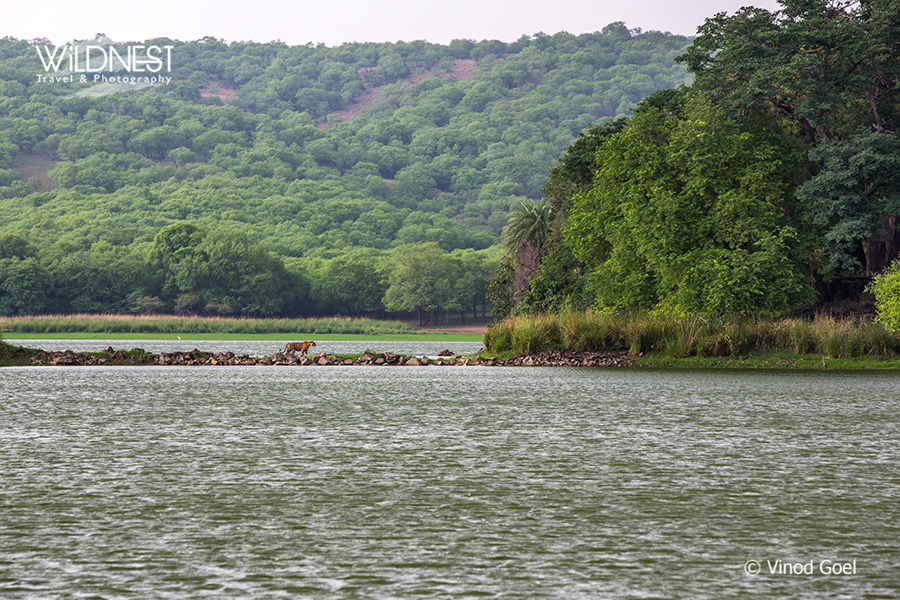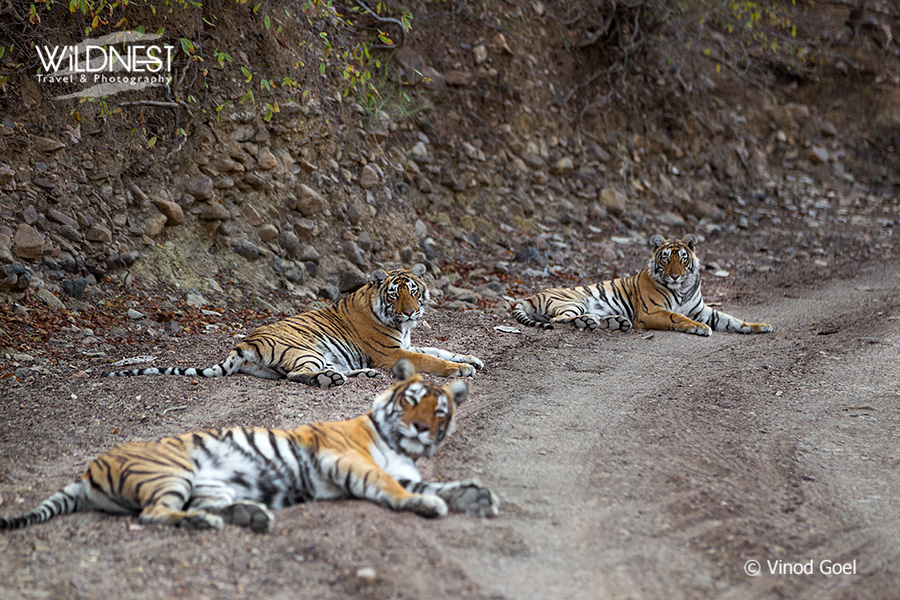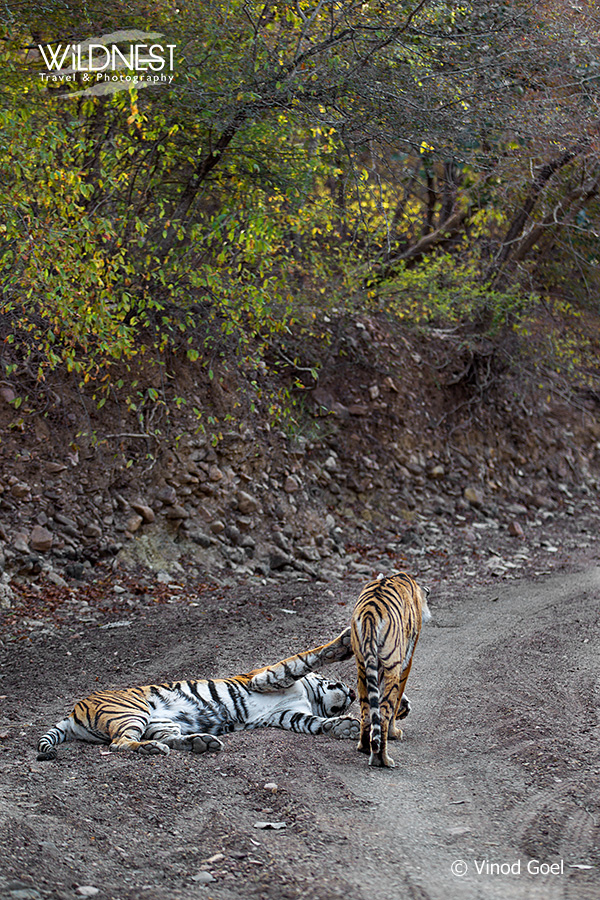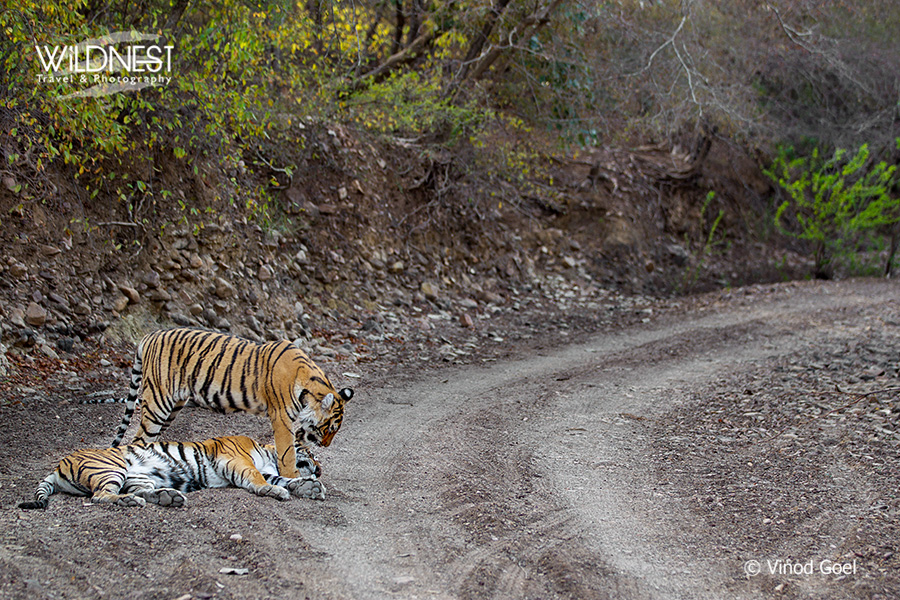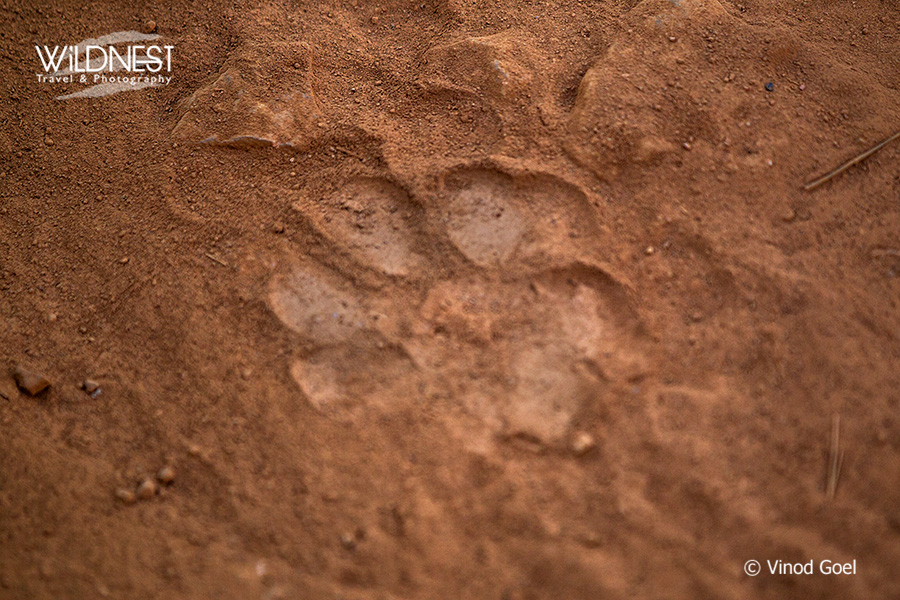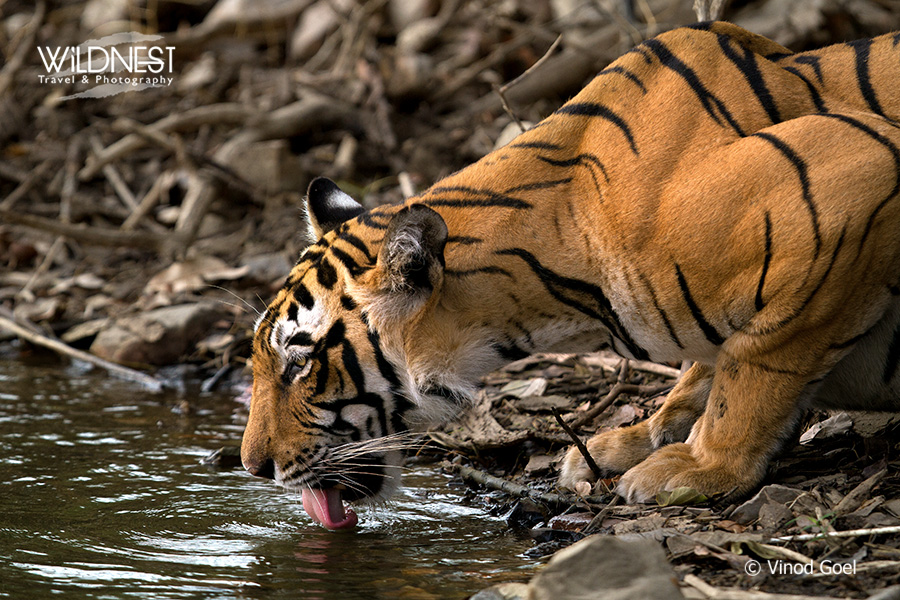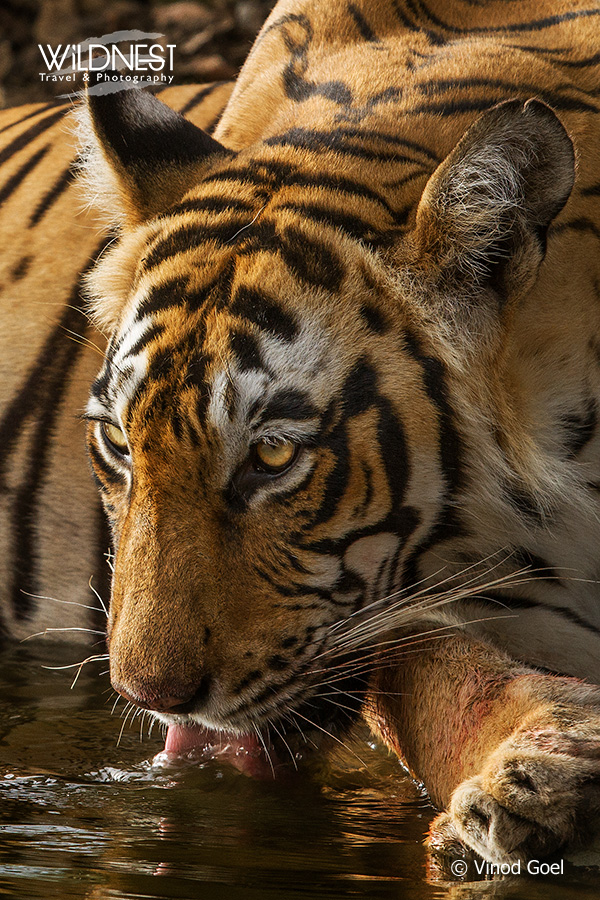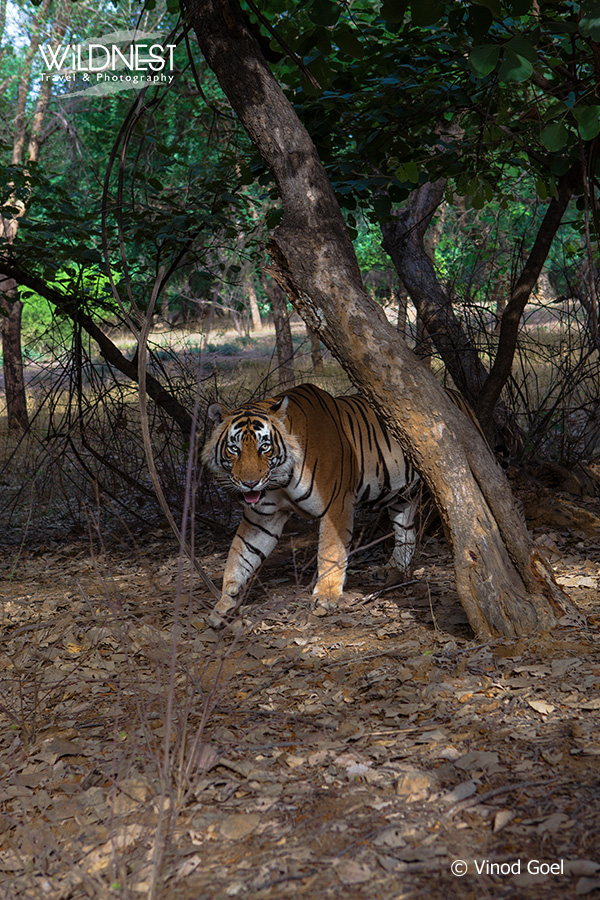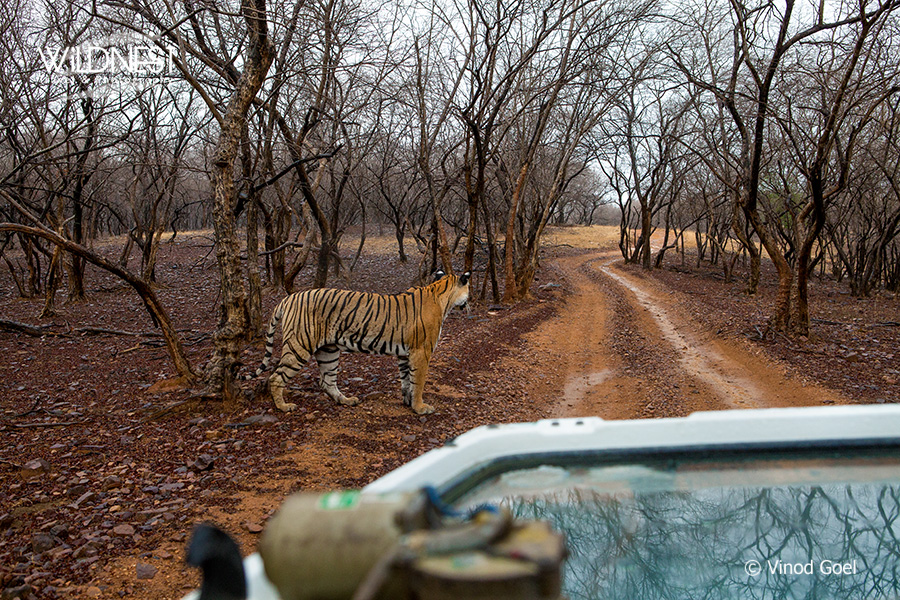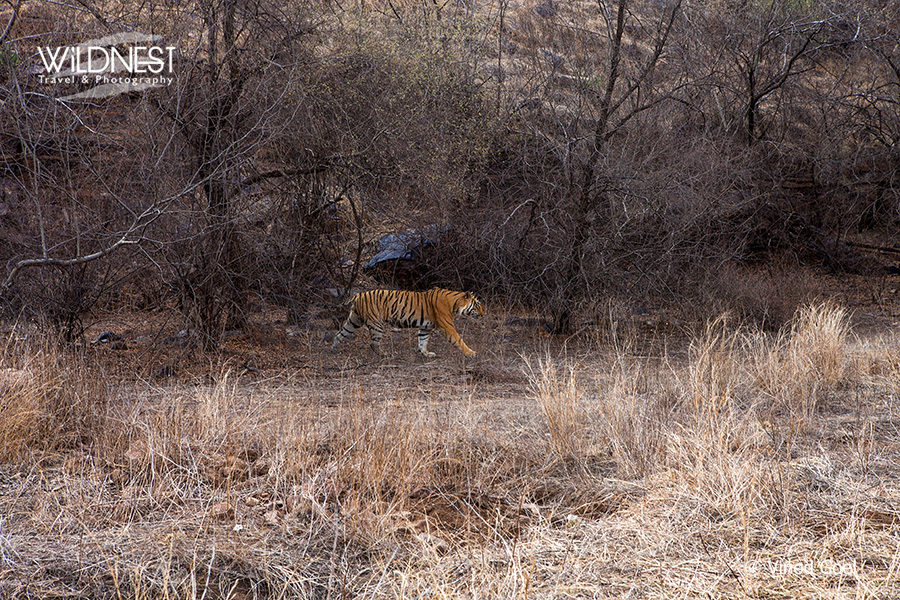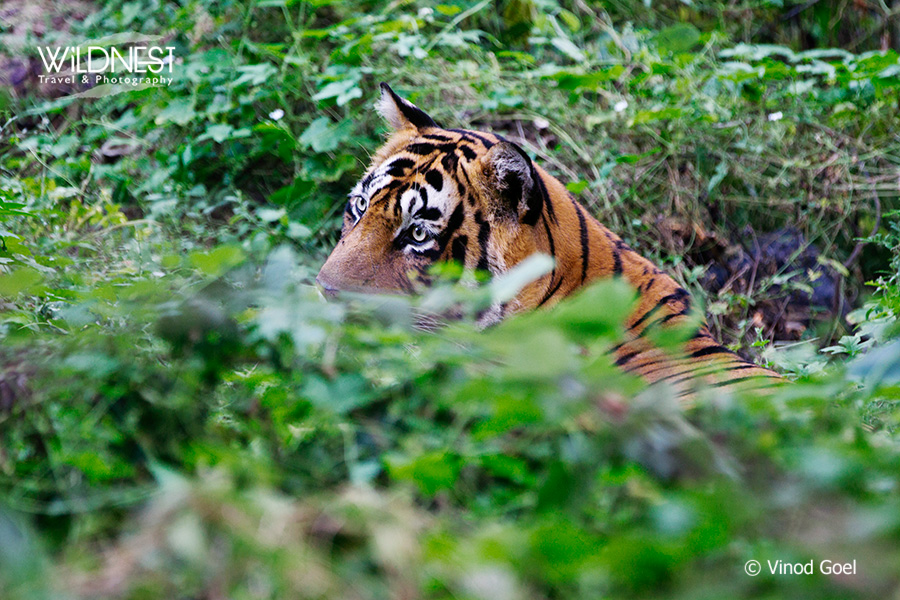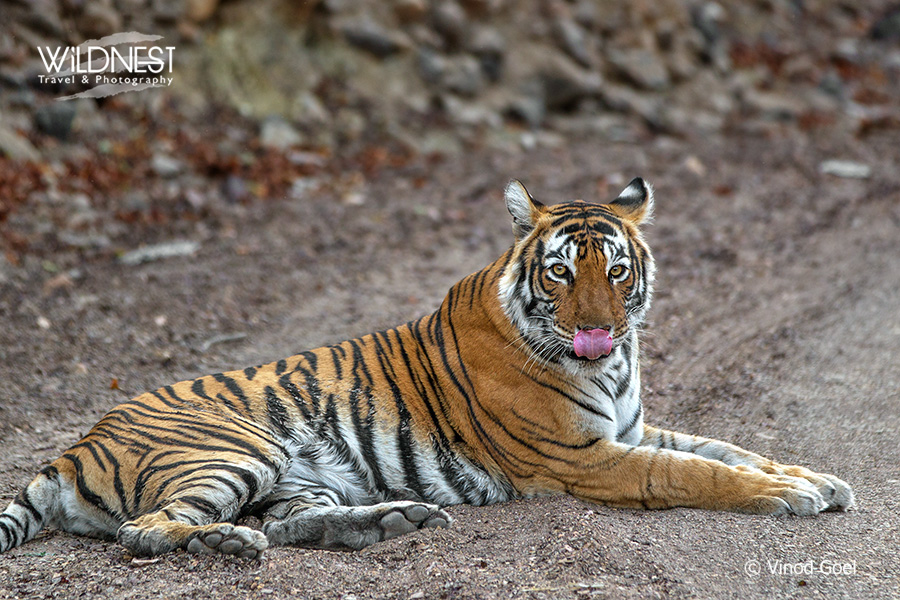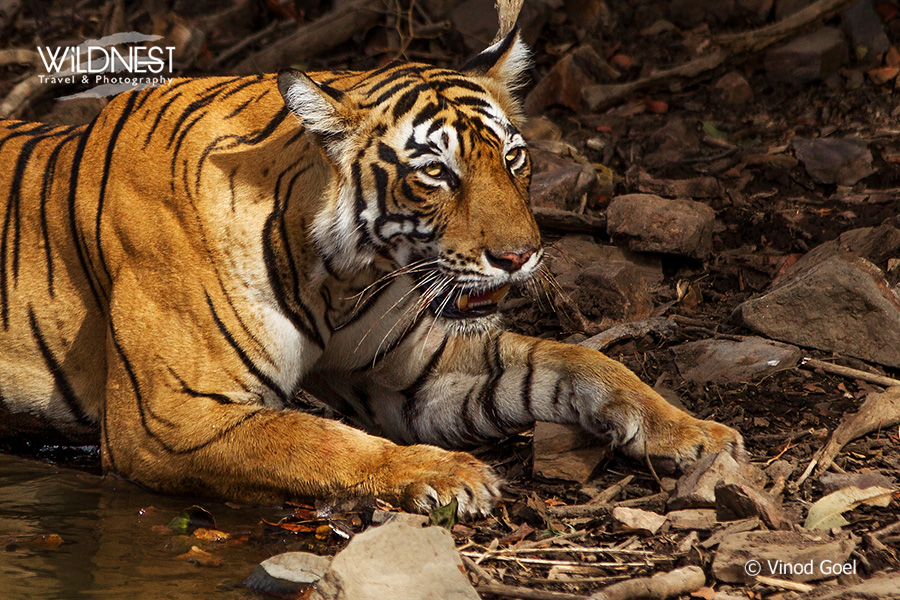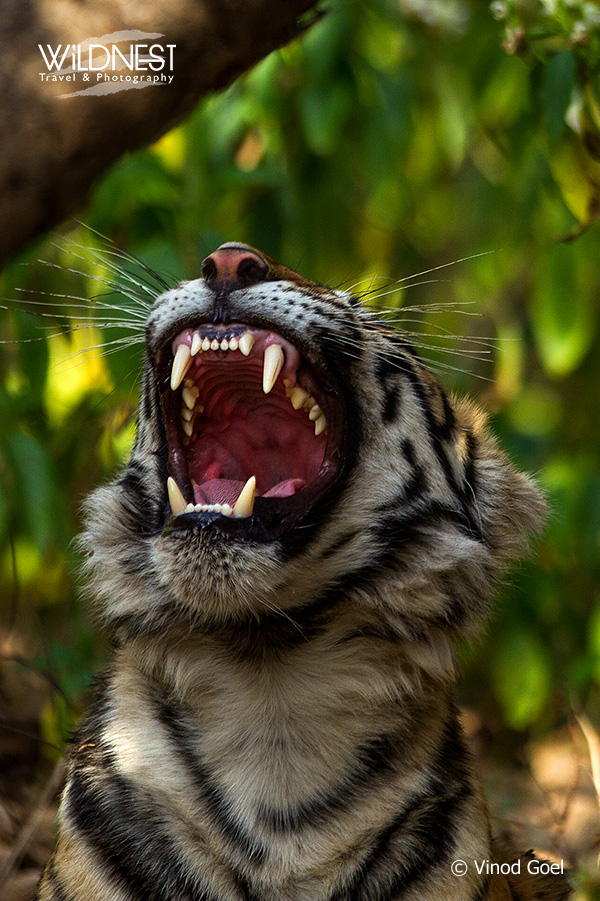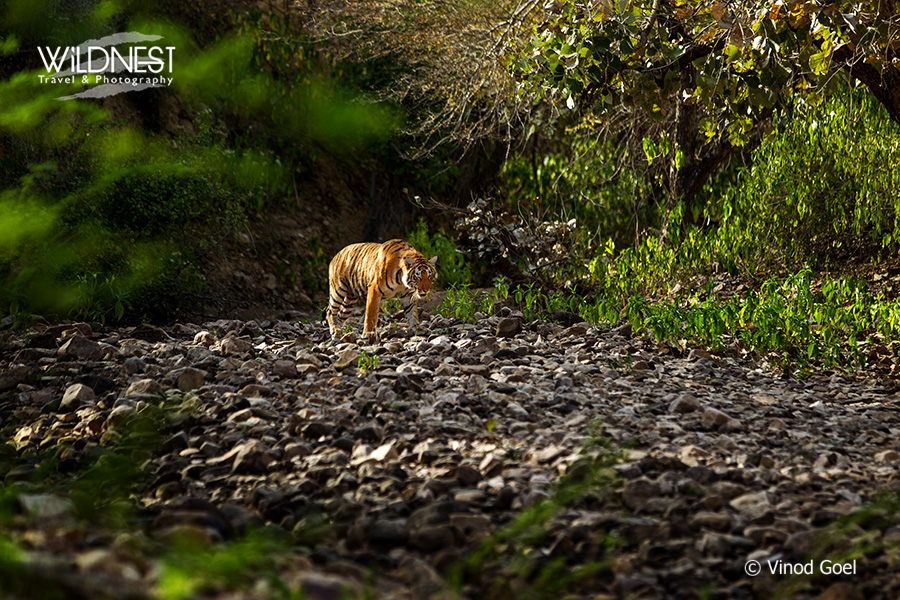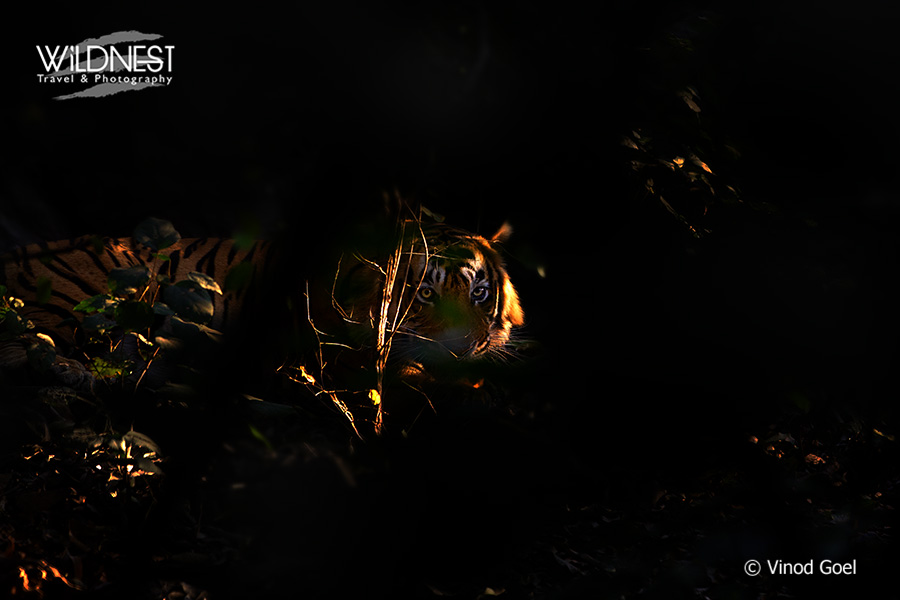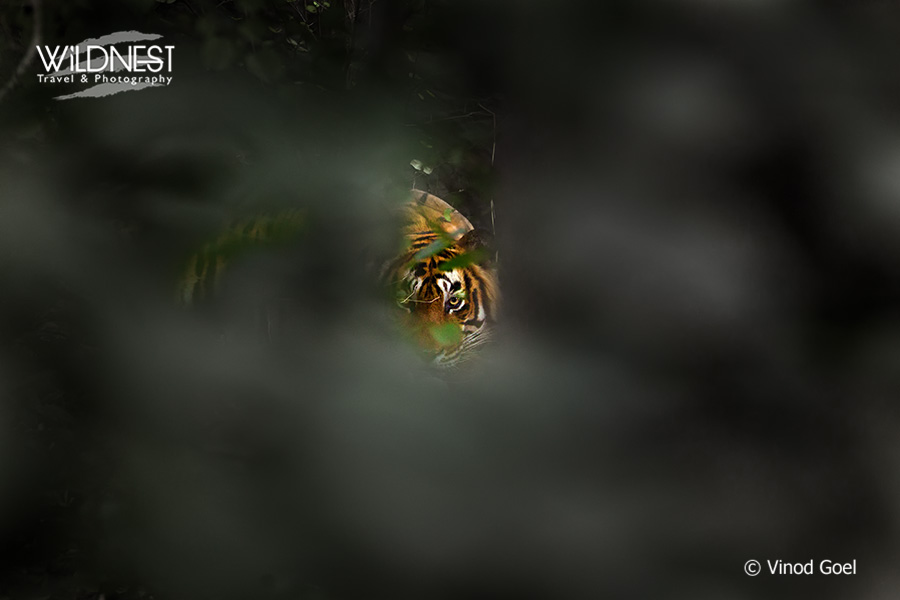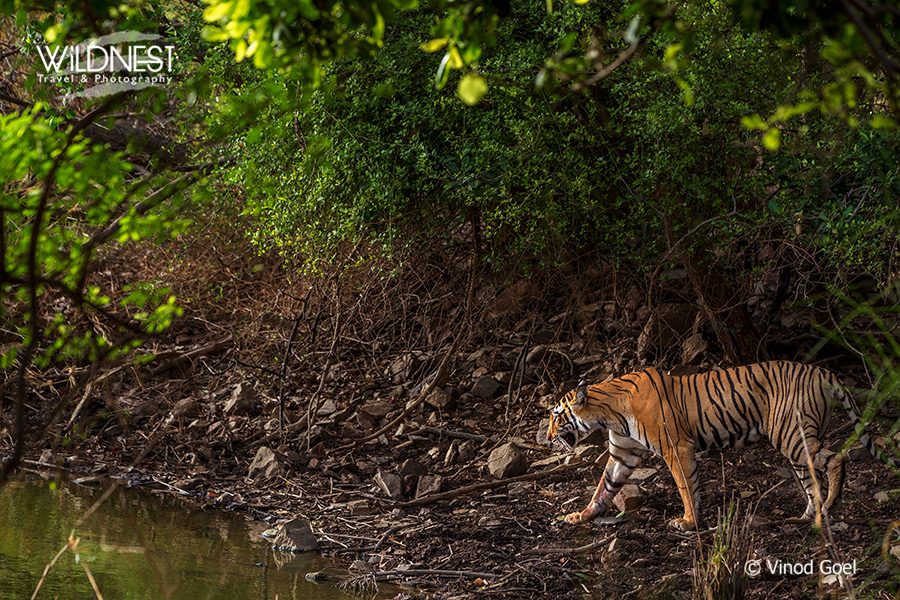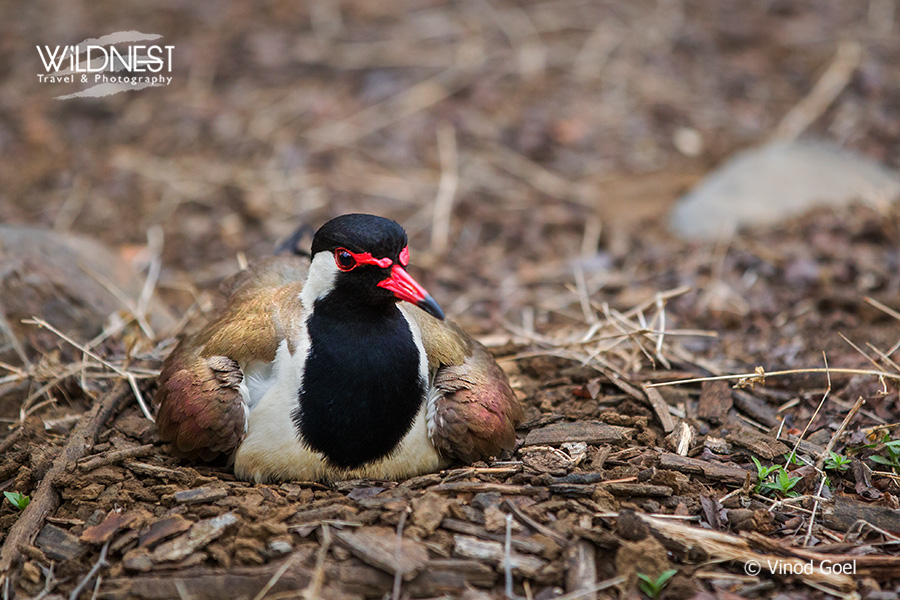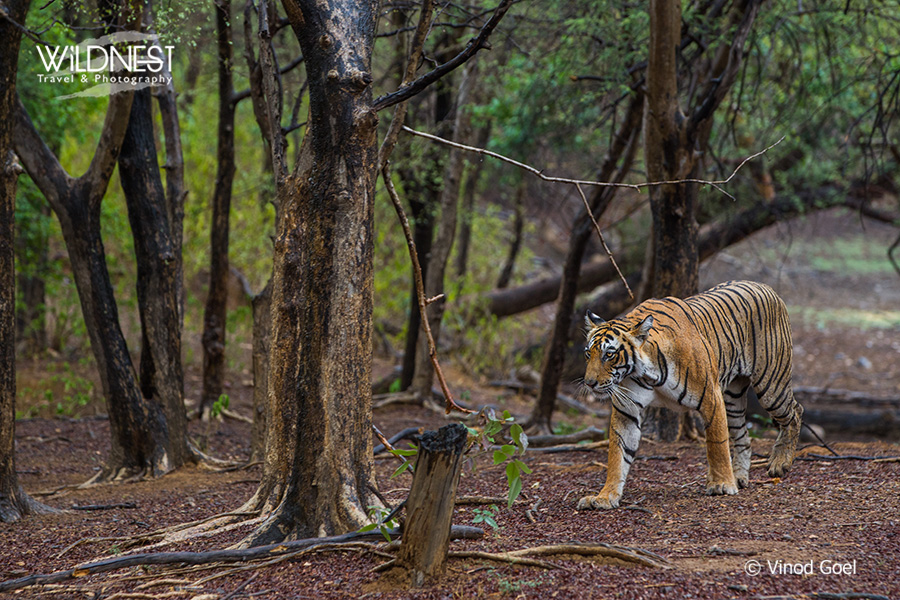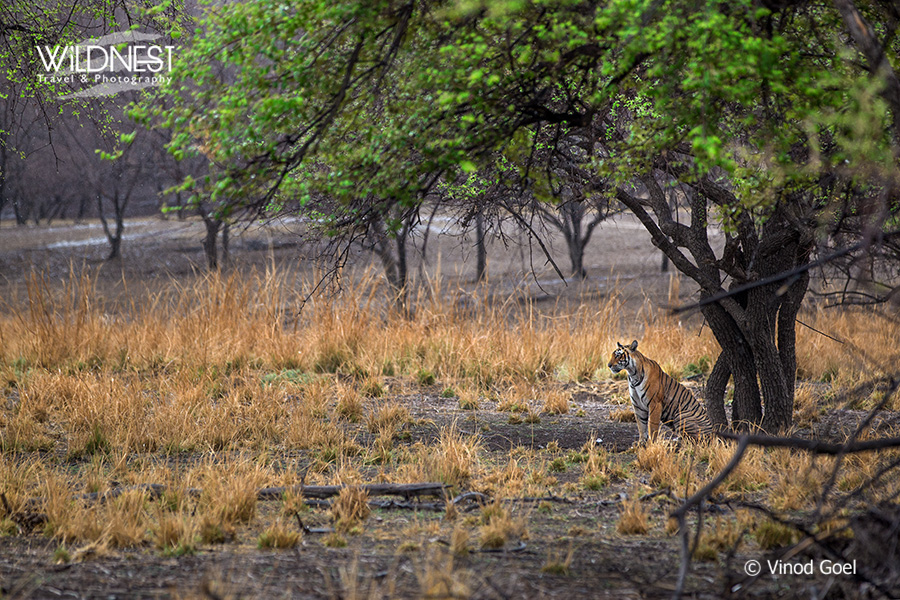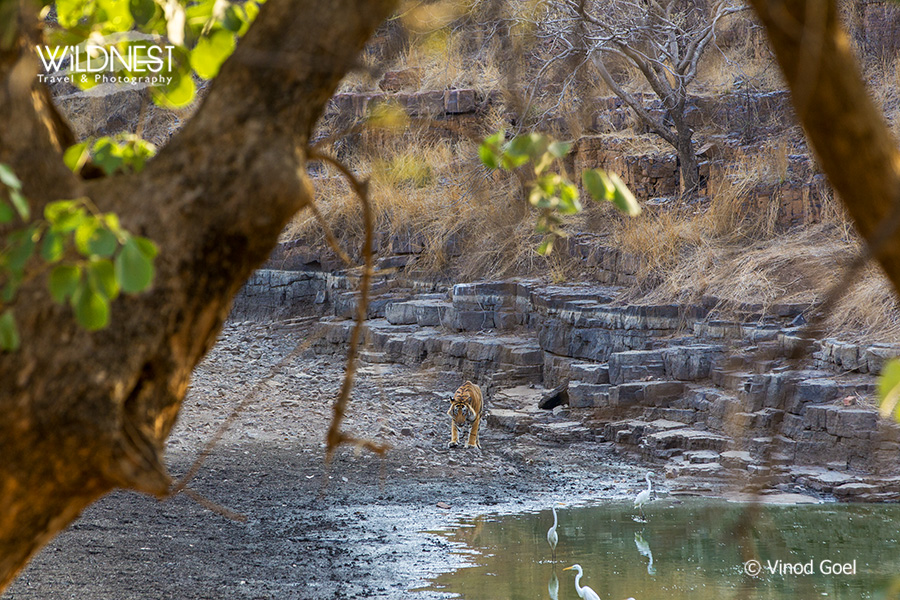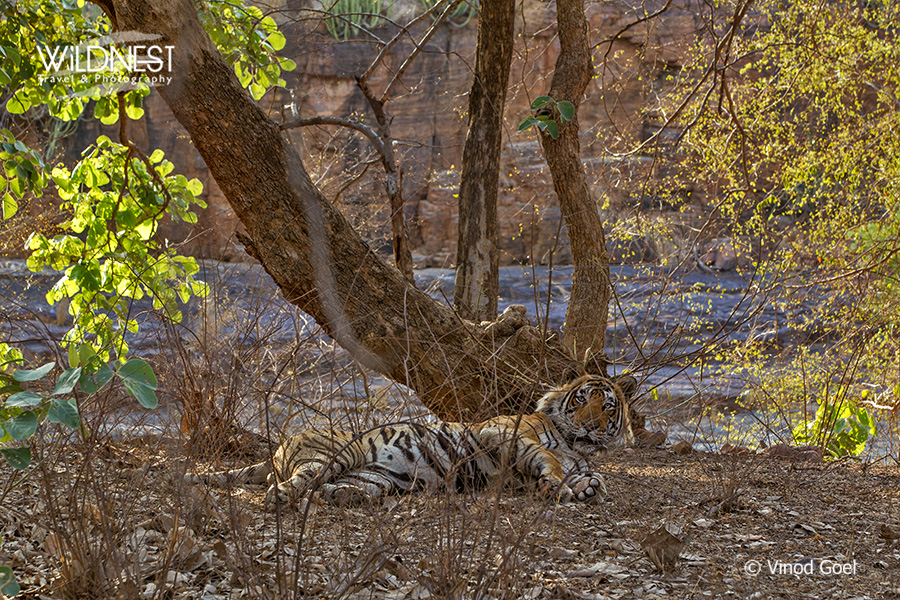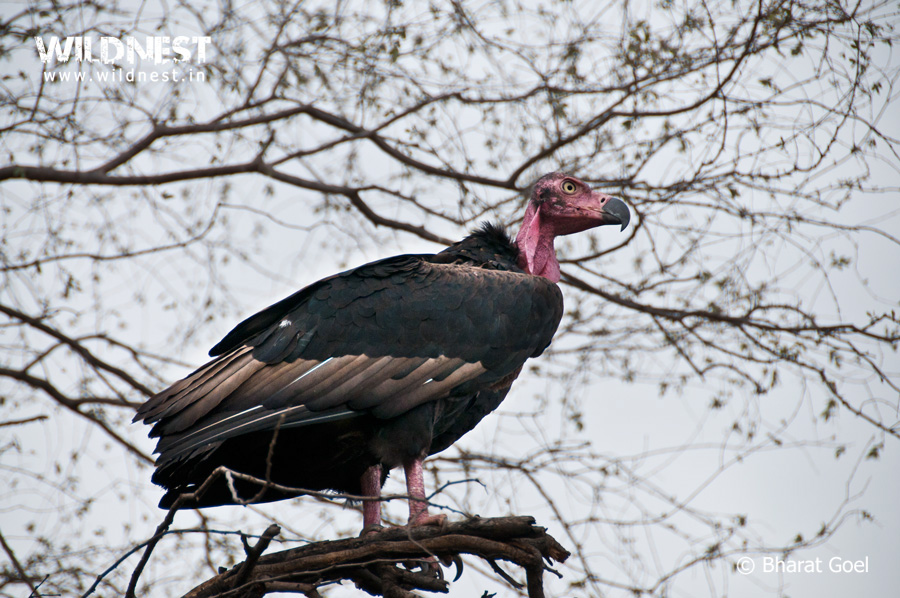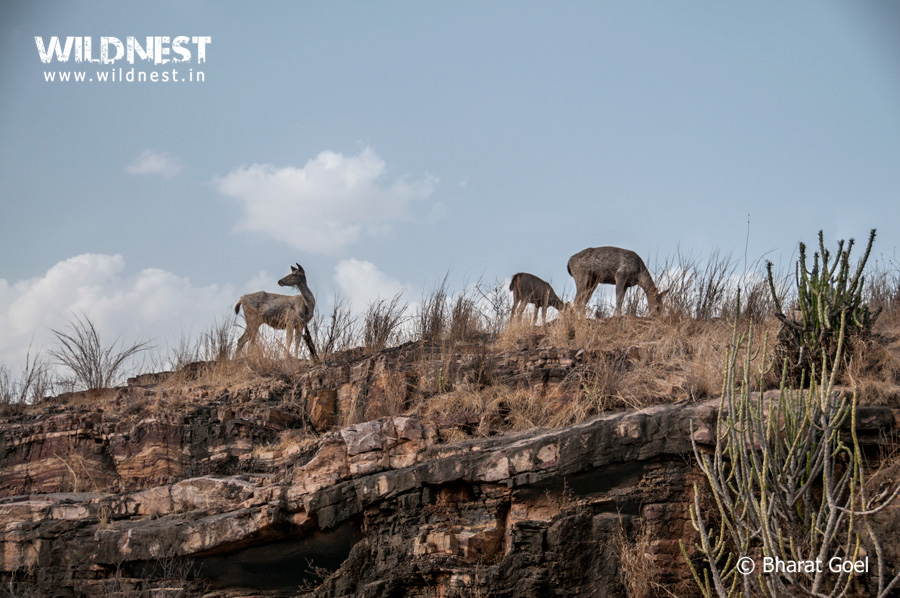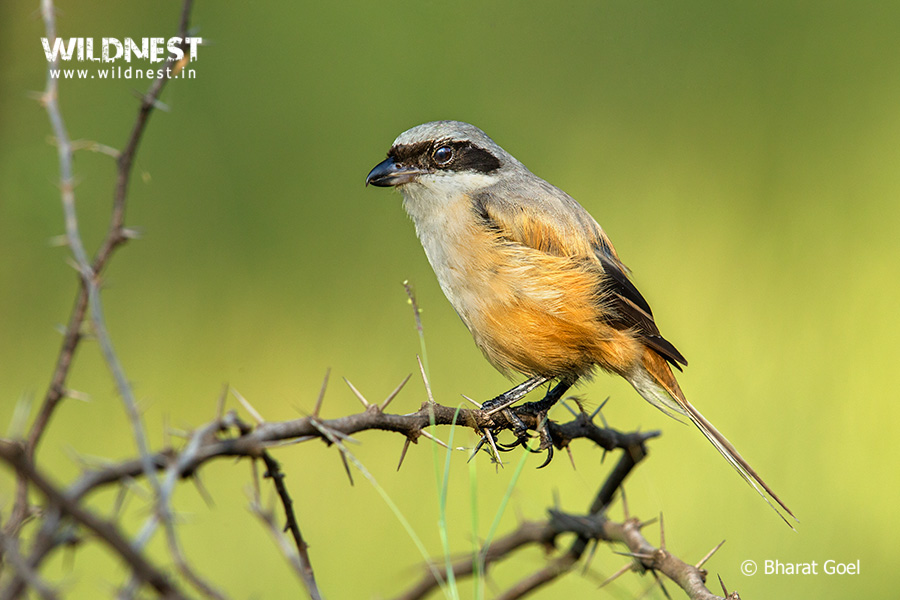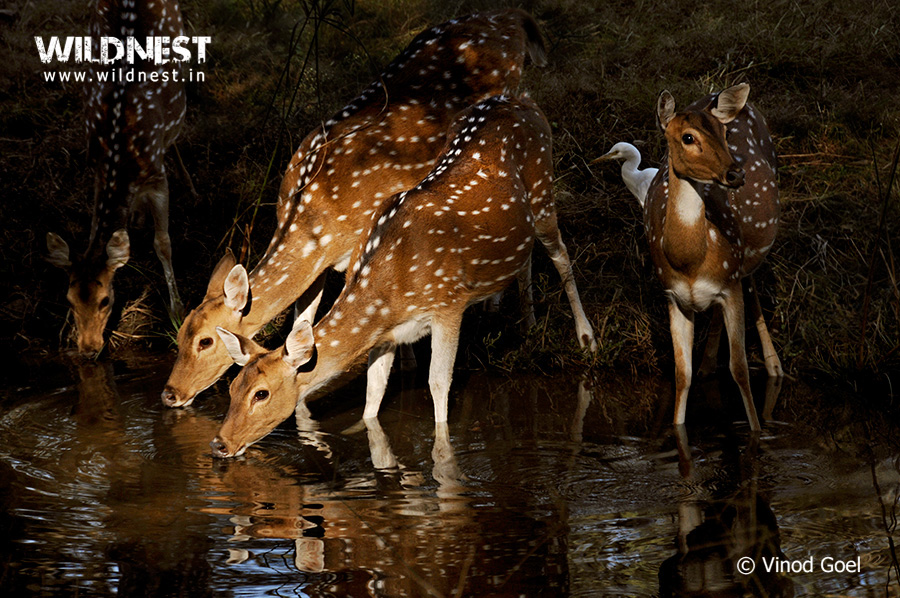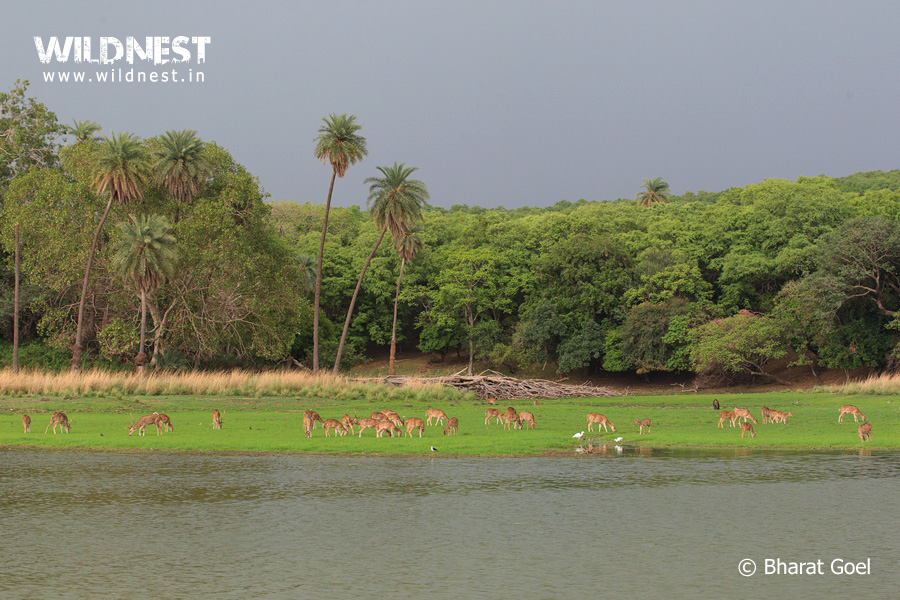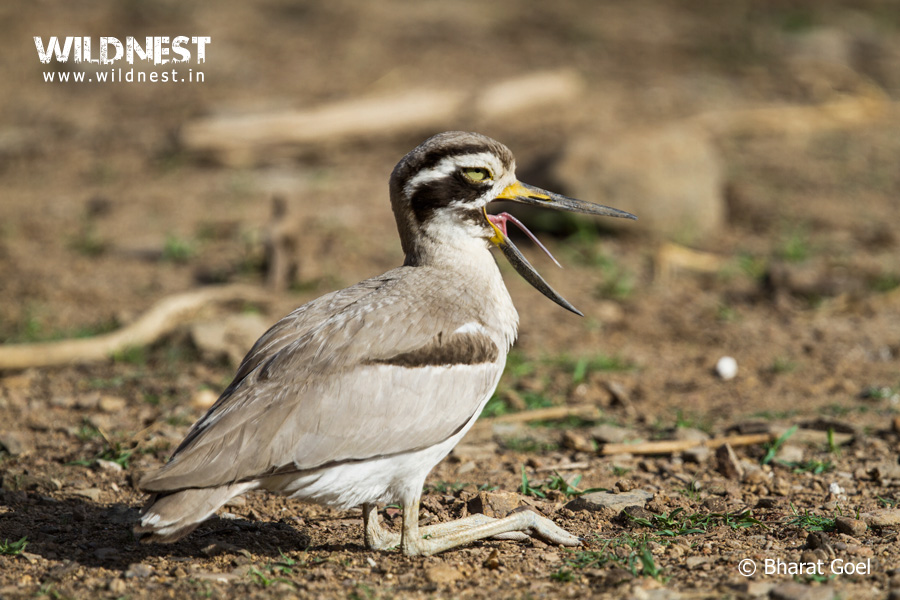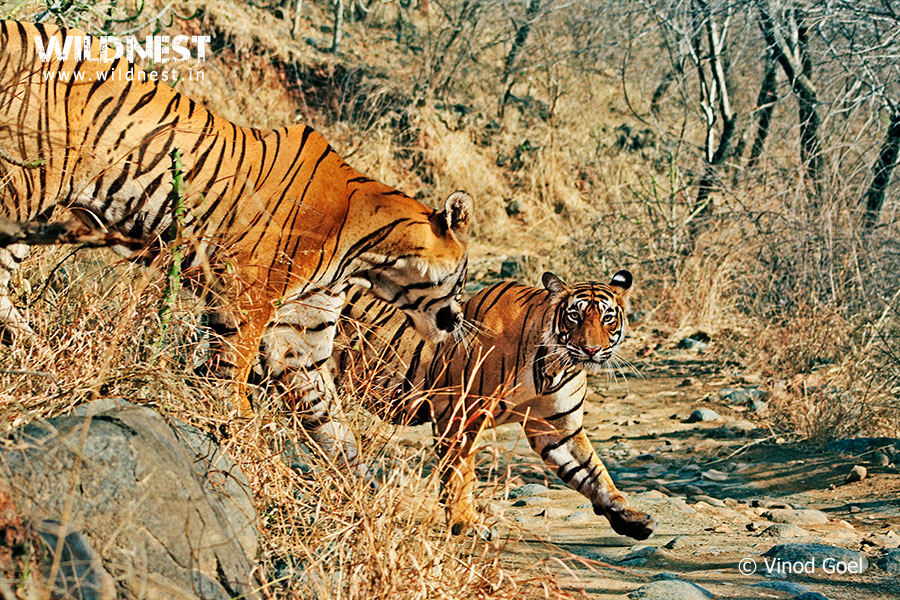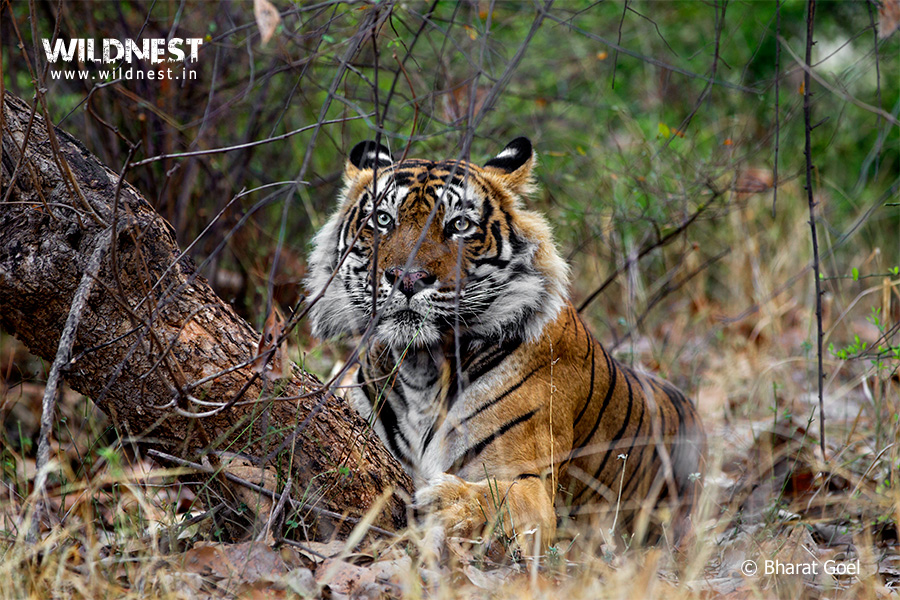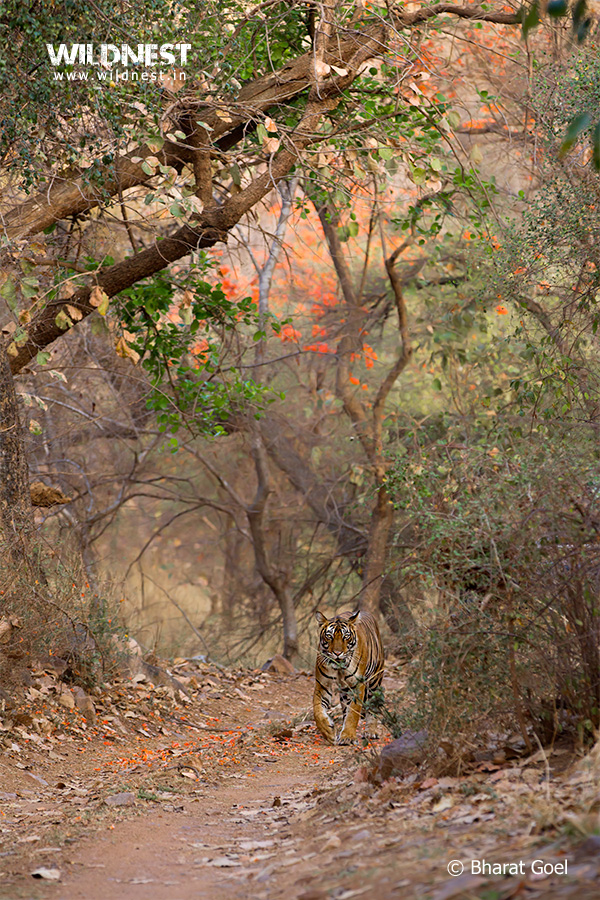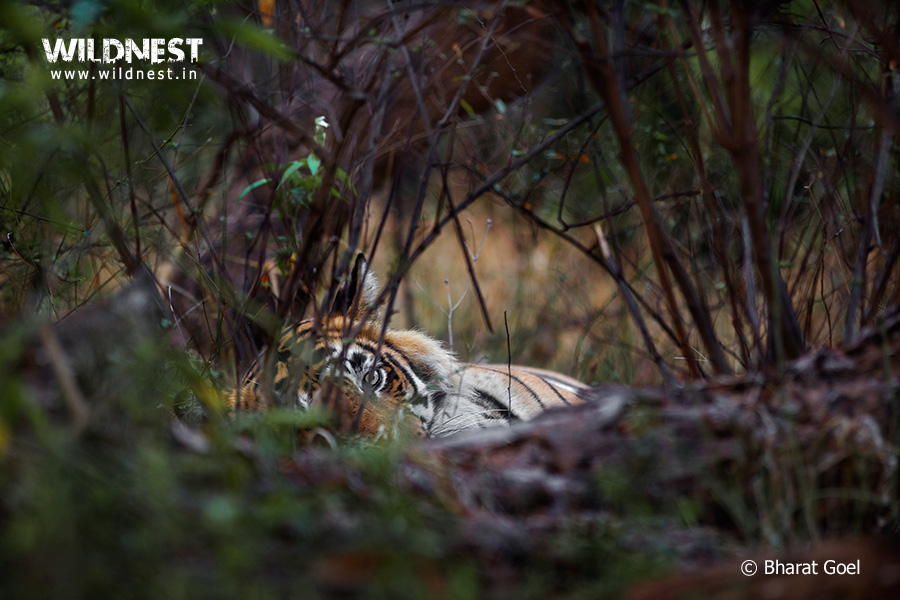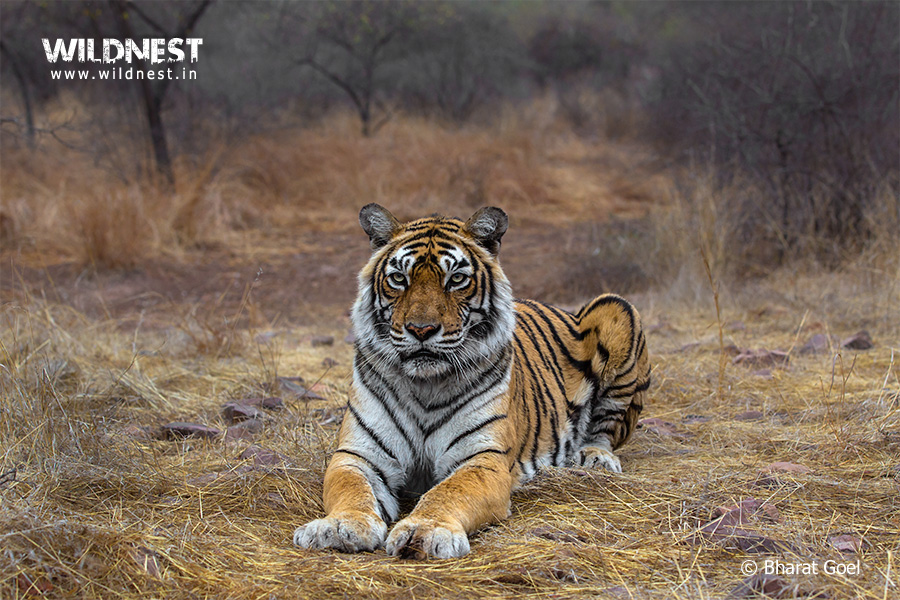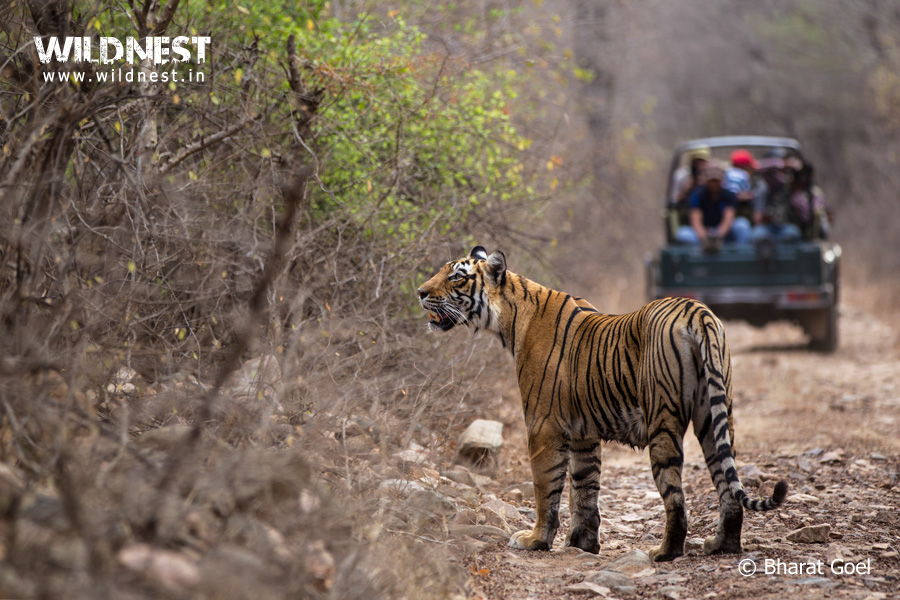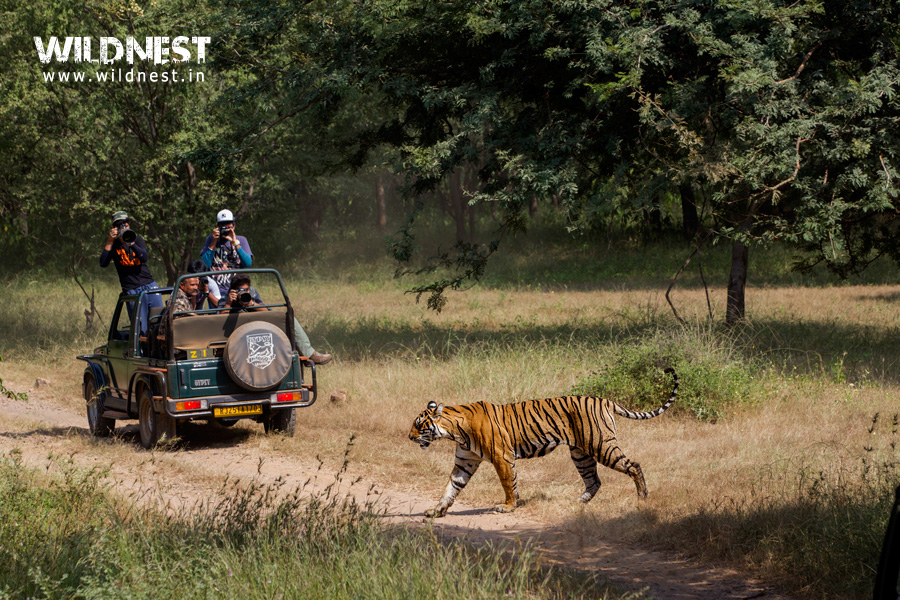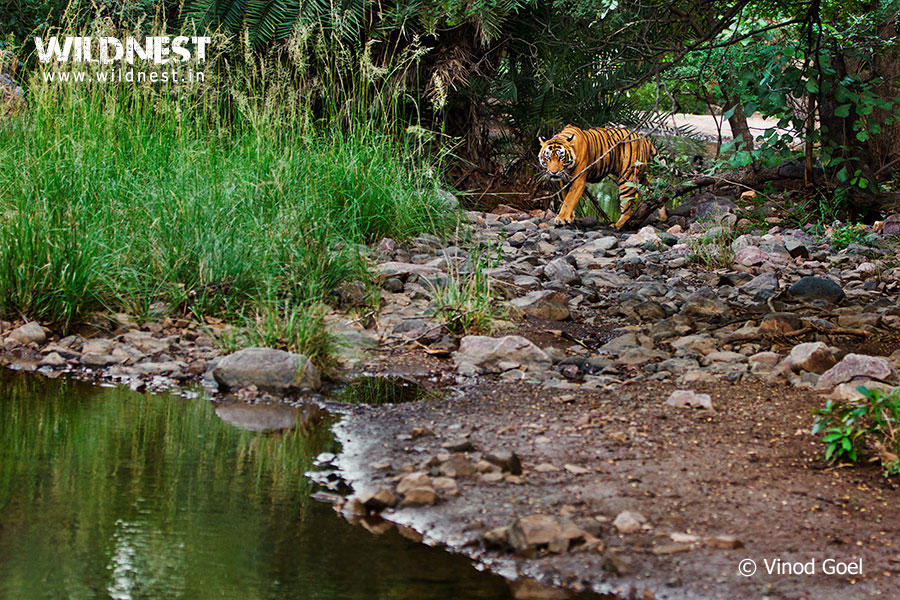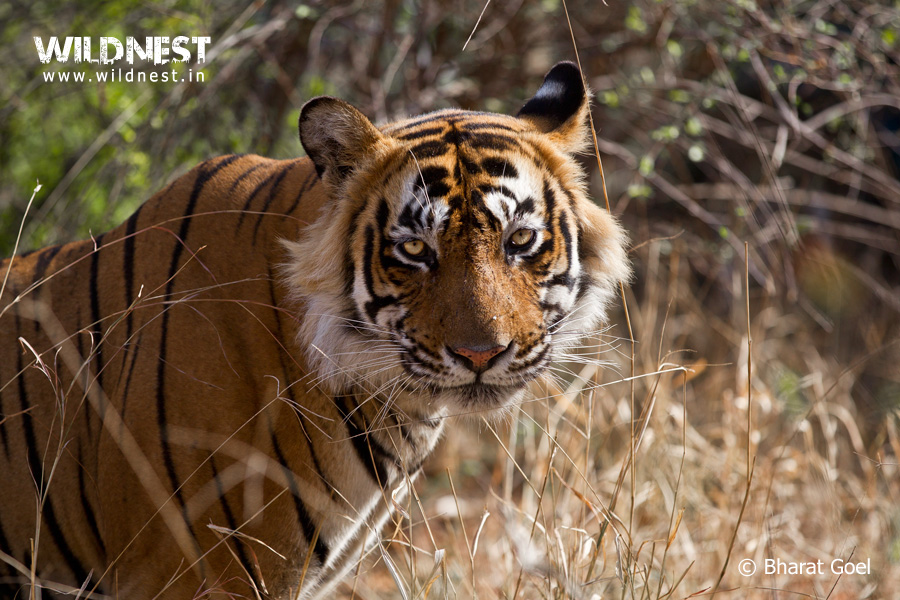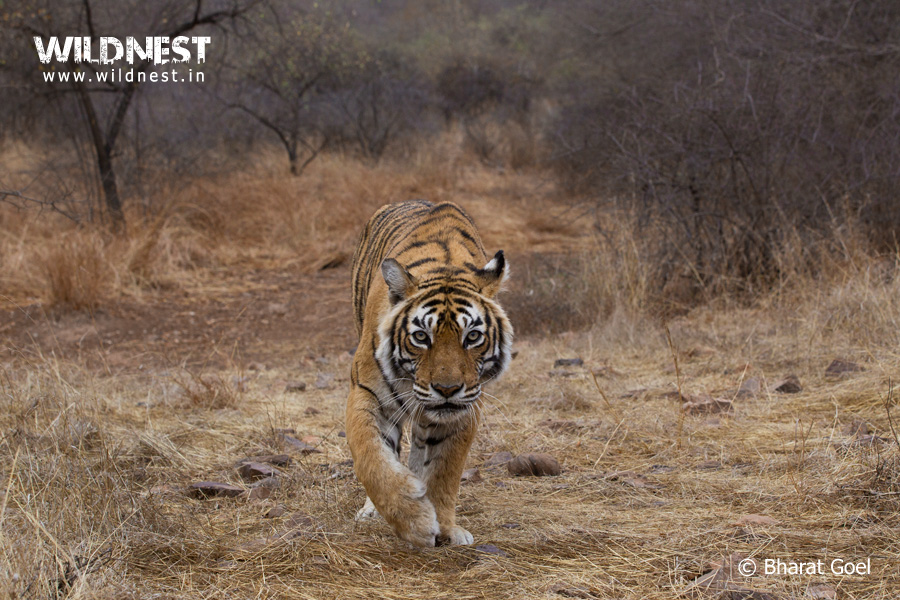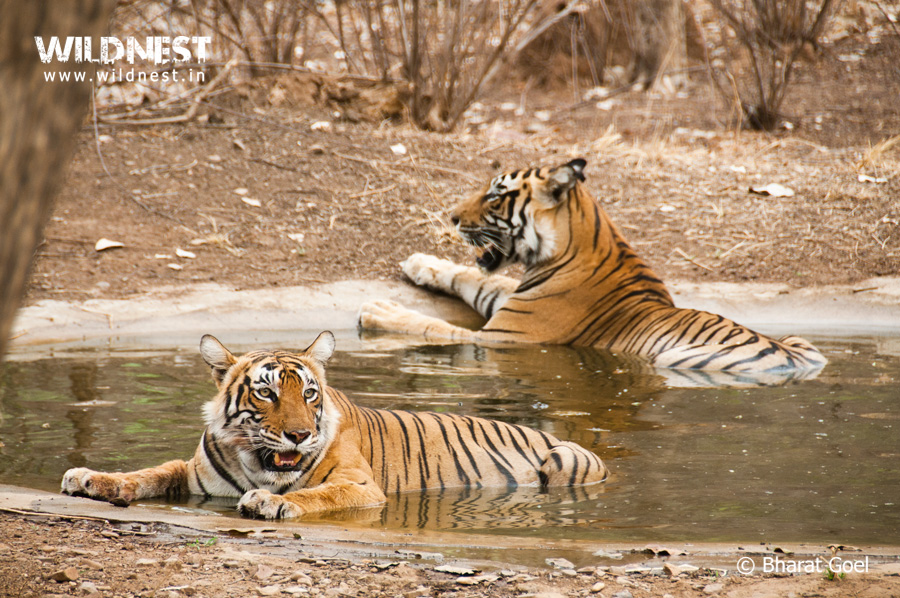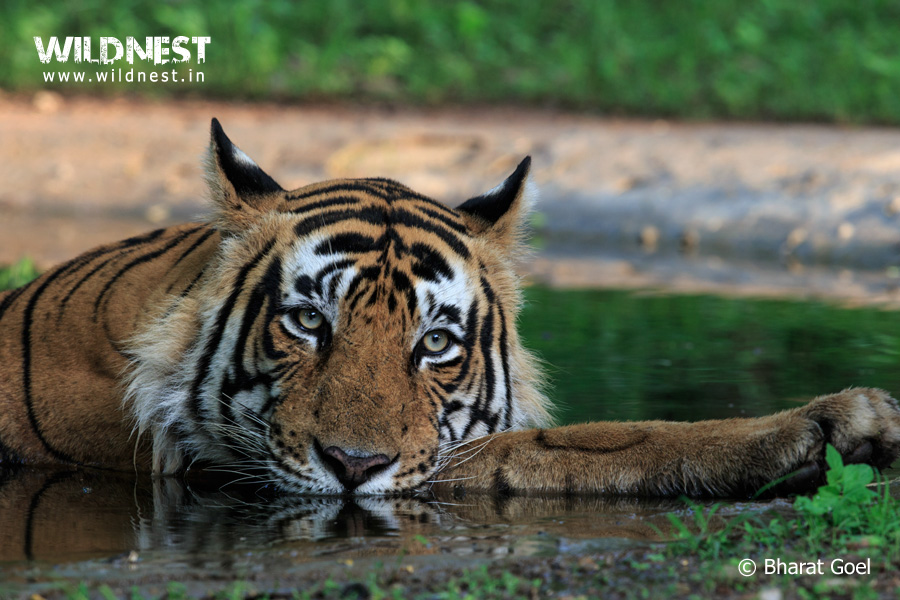About Ranthambore National Park
An erstwhile royal hunting reserve of the Maharaja of Jaipur, Ranthambore National Park today is one of the finest and distinguished national park in Northern India. The park is dotted with steep rocky hills and the dominating architecture of Ranthambore Fort (built in the 10th century), adds to its landscape. The national park is named after this ancient fort.
Ranthambore was declared one of the Project reserves in 1973. It became a national park in 1980. Ranthambore National Park is spread over an area of 1,334 sq km along with its nearby sanctuaries like – Sawai Man Singh Sanctuary and Keladevi Sanctuary. Ranthambore is known for its tigers and is one of the best places in the world to see these majestic predators in the jungle.
Interspersed with grasslands at the plateaus, meadows in valleys and luxuriant foliage around the canals, the park is bounded to the north by the Banas River and to the south by the Chambal River. Three big lakes – PadamTalab, Malik Talab and Raj Bagh – are similar turquoises studded in the vast forest that abounds with aquatic vegetation including duckweeds, lilies and lotus. PadamTalab is the largest of all the lakes located inside the park, and the beautiful red sandstone JogiMahal is located at the very edge of this lake.
Ranthambore brings you face-to-face to one of nature’s most gifted wildlife. It’s one of those national parks from where you will never return empty handed. Its heritage, culture, safaris, lush green forests and wildlife-makes it destination nonpareil.
Flora & Fauna
The fauna and flora at Ranthambore is gratifying. It is home to majority of wild animals including tiger, leopard, marsh crocodile, sloth bear, wild boar, nilgai, sambar, caracal, hyena, jungle cat, chinkara, black buck. It also offers the best of opportunities to ornithologists. The park has a significant bird population, both resident and migratory including greylag goose, woodpeckers, Indian grey hornbills, common kingfishers, cuckoos, Asian palm swift, owls, nightjars, eagles, drongos, flamingos, falcons, etc.
The vegetation in the park is mostly of the dry deciduous type. The most prominent trees spotted here are dhok, mango, jamun, gum, kadam, khajur, khair, karel, mahua, salar, etc. Ranthambore is also the site of one of the largest banyan tree in India.
Ranthambore Weather
Summers (April to June): During summers, the day temperature can soar in between 35 to 47 °C with night temperature around 30°C. Visitors are advised to carry comfortable light cotton clothing.
Monsoon (July to September): The Park is closed during this period. Only few zones remain open (kindly contact us to know more).
Winters (November to Mid March): During winters, the mornings and nights are freezing but afternoons are pleasant. Temperature goes down to a min 2°C or so during winters. One is advised to carry heavy woollen clothes as the safari vehicles are open and one feels more cold in the moving vehicle.
About Ranthambore Tigers
One of the star attraction of park is a tigress namely Machhali-T 16 (born in 1997), also known as lady of the lakes, who taught its cubs, how to kill a crocodile. Her encounter with a 14 feet long crocodile was the first of its kind to be recorded and filmed by anyone in the history. She is the most photographed tigress of Ranthambore and has even received a Lifetime Achievement Award for her contribution to conservation and in widening Rajasthan economy. A postal stamp was also released on 18thSeptember, 2013 in her honour by the Post and Telegraph Dept.
Ranthambore National Park is also witness to rearing of two female cubs by a father (male tiger) after the death of their mother, when the cubs were hardly 3 months old. This is a rare phenomenon. Both these females are grown up and has been translocated to Sariska Tiger Reserve, where they would create their own world.
Ideal time to observe Wildlife and Photography
The park is open from 1st October to 30th June. The best time to see tigers is during summers (March to June) as there is higher probability of finding them near water bodies in which they spend more time to cool themselves from the scorching heat. Winter (October to February) is more comfortable and is good for bird watching and photography, considering the lighting conditions. In October, just as the park reopens, the jungle mesmerizes one with its lush green color post monsoons and offers spectacular photography opportunities.
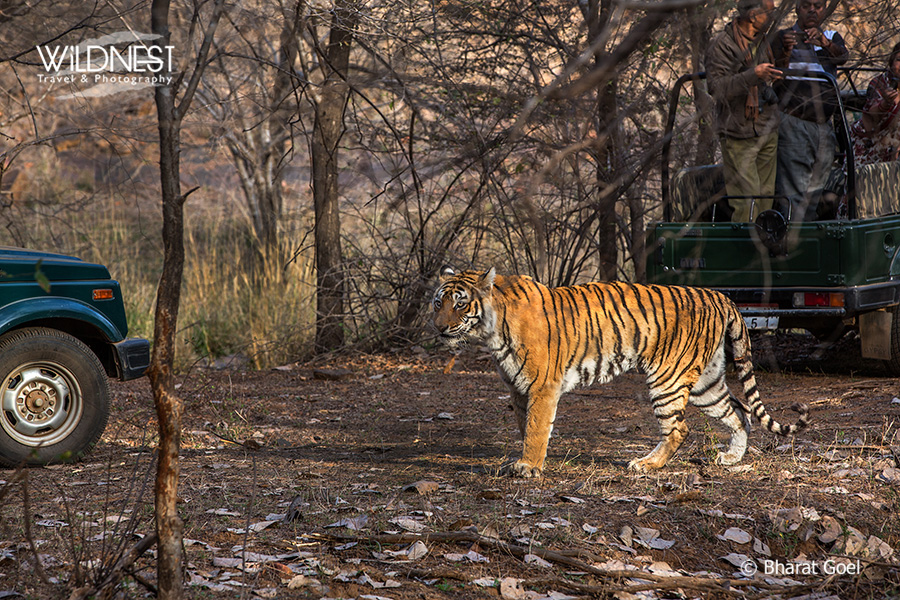
Golden Triangle Tour with Ranthambore
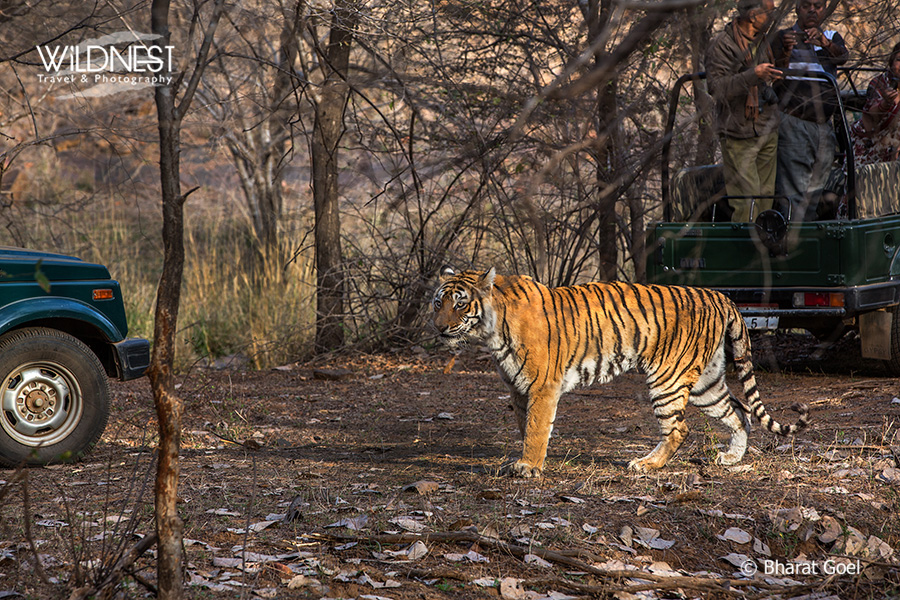
India Tiger Safari and Taj - 9 Days
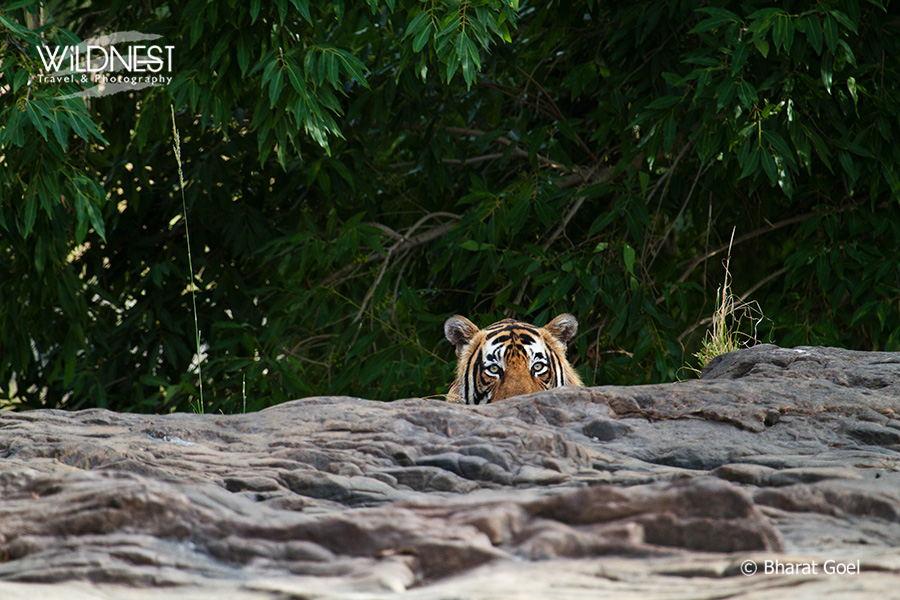
India Tiger Safari – Ranthambore and Tadoba - 8 Days
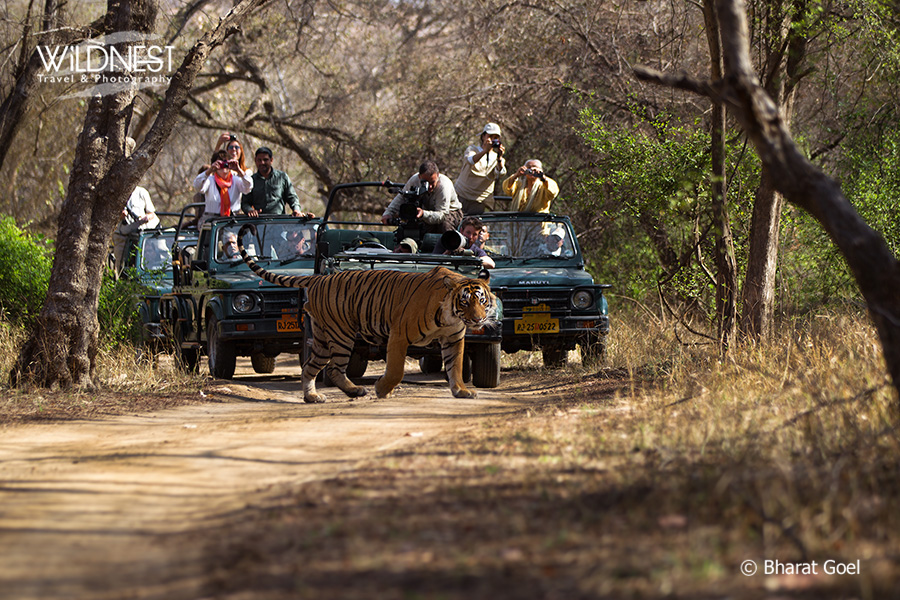
Ranthambore Photography Tour - 4 Days
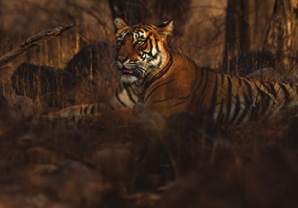
Ranthambore Tiger Reserve
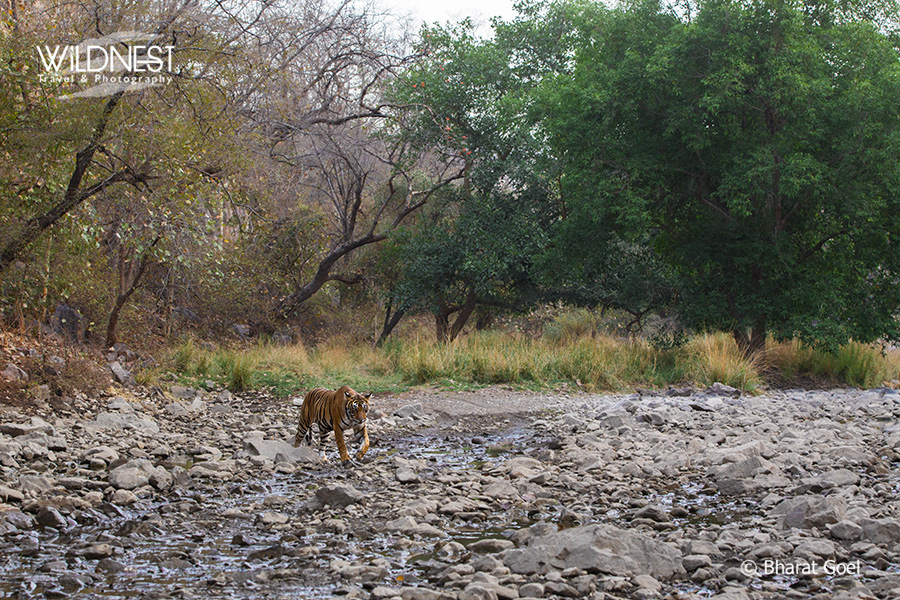
Ranthambore Tiger Safaris & More - 3 Days
